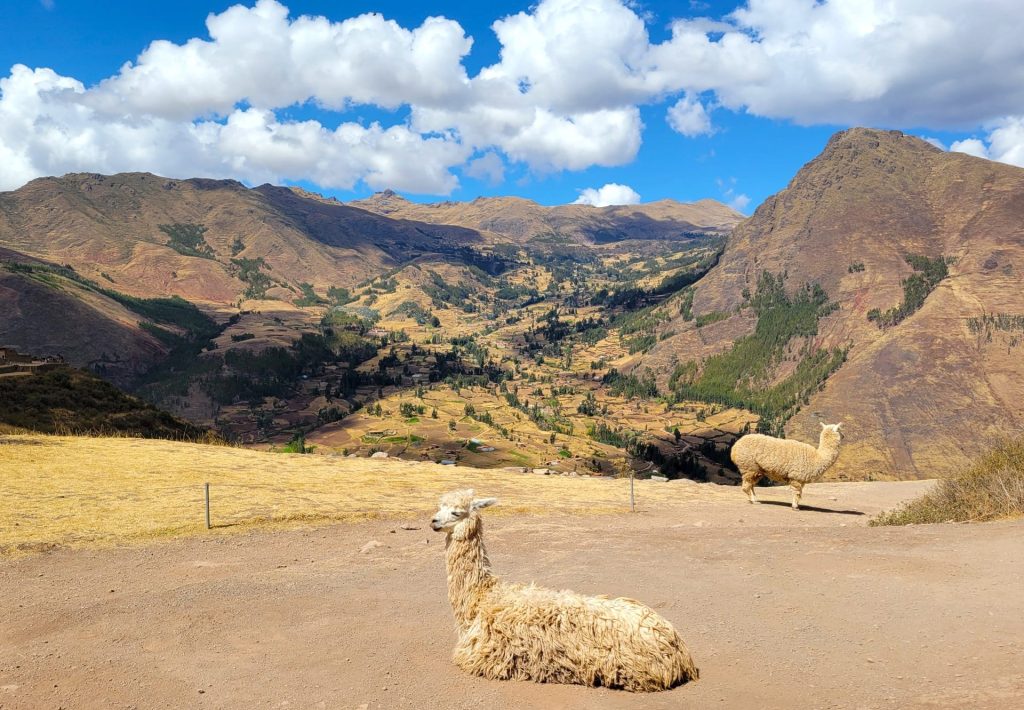
Situated at more than 11,000 feet above sea level, the former Inca capital is filled with spectacular mountain views and stunning landscapes. Moving around at this elevation is no joke though. Even walking up minor hills left us panting and out of breath. But once we were better acclimated to the elevation, we found Cusco to be a marvelous place to hike. These hikes always included some Inca ruins, which are everywhere in the area and a great addition to any trek. We also used Cusco as a jumping off point to visit the famous Machu Picchu, which is breathtaking in its own way.
Of cities with at least 100,000 people, Cusco is the 9th highest in the world. Coming from sea level, we were concerned about altitude sickness and did our best to combat it. We made a concentrated effort to stay extra hydrated, especially for the first few days. Part of that included drinking coca tea, which is the local remedy. And we rested when short of breath instead of pushing through. It worked pretty well. We succumbed to some minor headaches for the first couple of days, and I woke up in the middle of the night somewhat out of breath a few times during the first week. But we avoided most of the major issues and everything continued to get easier the longer we were there.
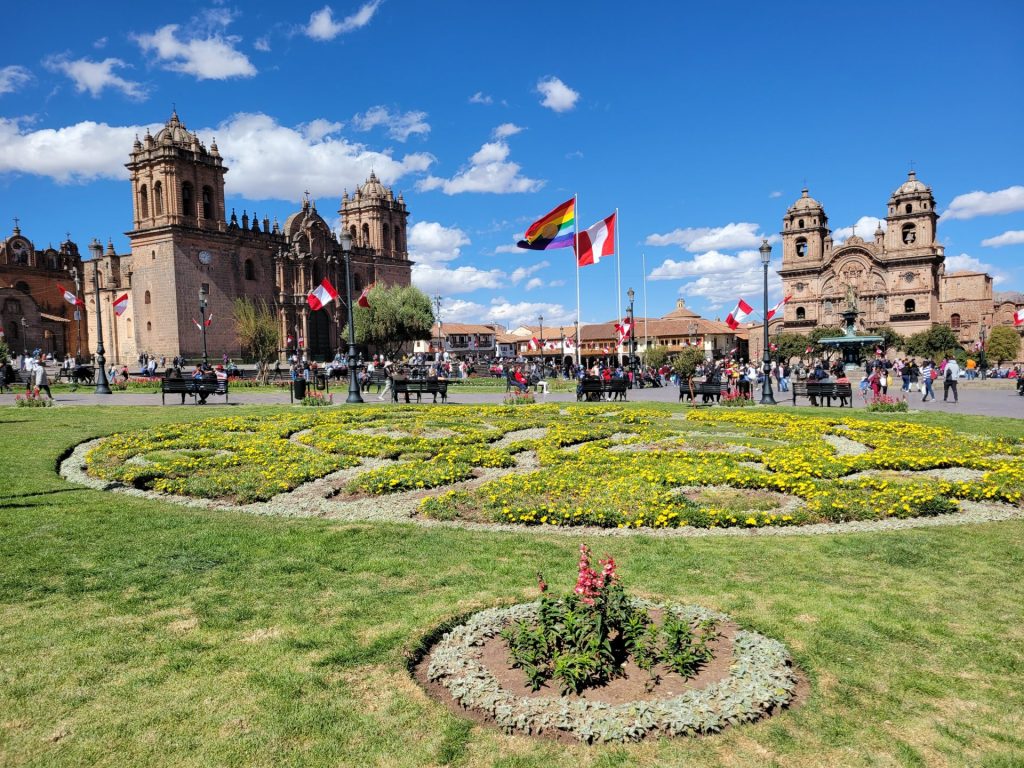
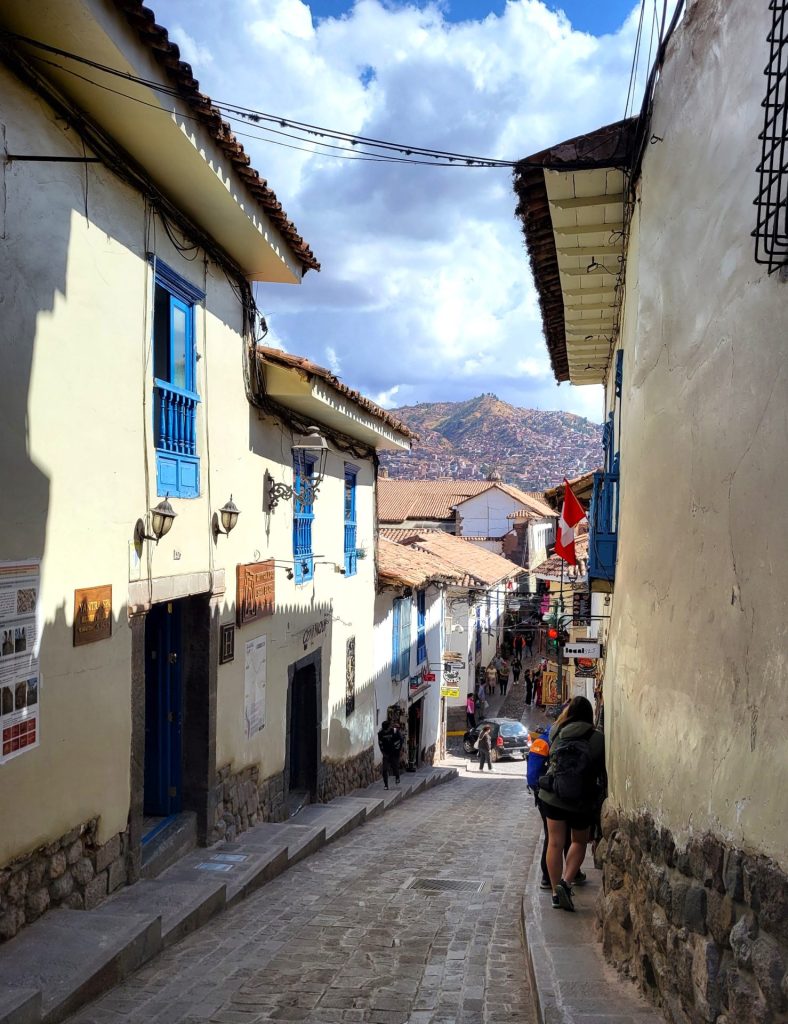
There are a dozen archeological parks with hiking trails in the area, some of which barely get any traffic. While exploring these sites, we marveled at precision-built stone walls, defensive forts, sacred baths, storage houses, and scads of terrace farms. It really felt like all of the ruins were unique in some way, which kept us interested no matter how many different spots we visited. Cusco also has a handful of nice museums that cover the interesting history of the area. Learning all about the Inca and walking through their major sites really makes the past come alive.
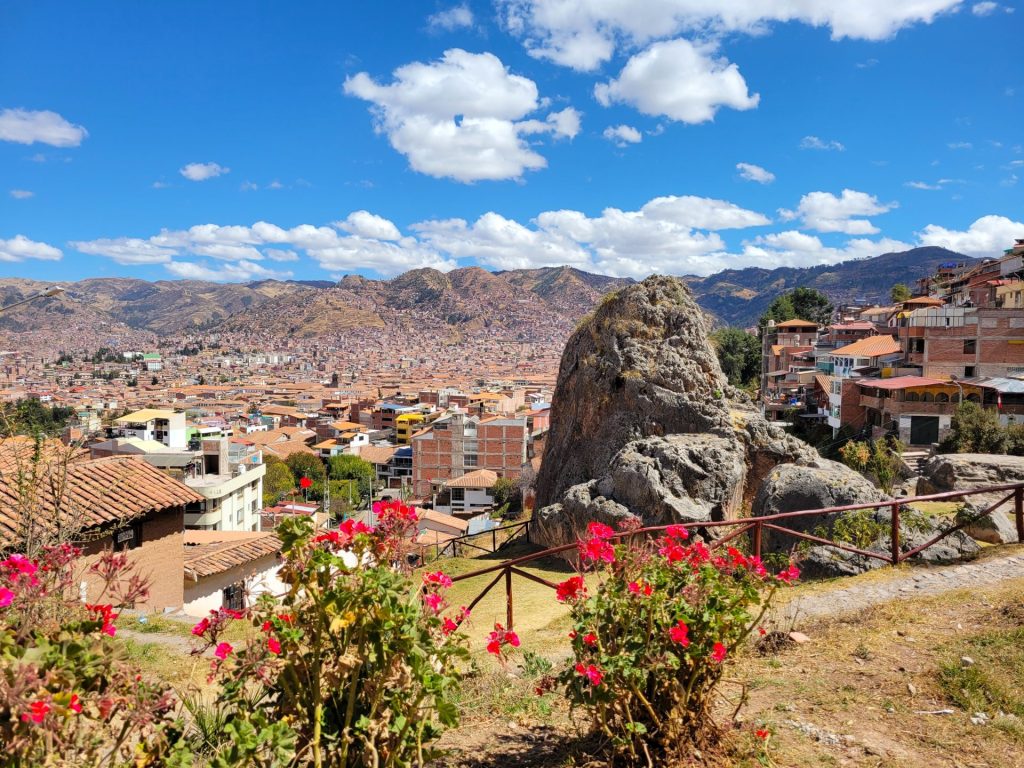
Qoricancha
Qoricancha is the main museum that catalogs the history of the Inca. Also spelled Qorikancha, Qurikancha, and Coricancha depending on the source, it’s built on the site of a former temple dedicated to the sun god. At one point in history, this temple was filled with gold, including gold-plated walls and solid gold statues. That extravagance was plundered by Spanish conquistadors, but the museum is still reasonably fancy. It centers around a large courtyard which connects dozens of rooms with interesting tidbits about daily life. There are sections covering astronomy, religion, architecture, art, and more. There’s also a church right next door that’s included in the entrance price.
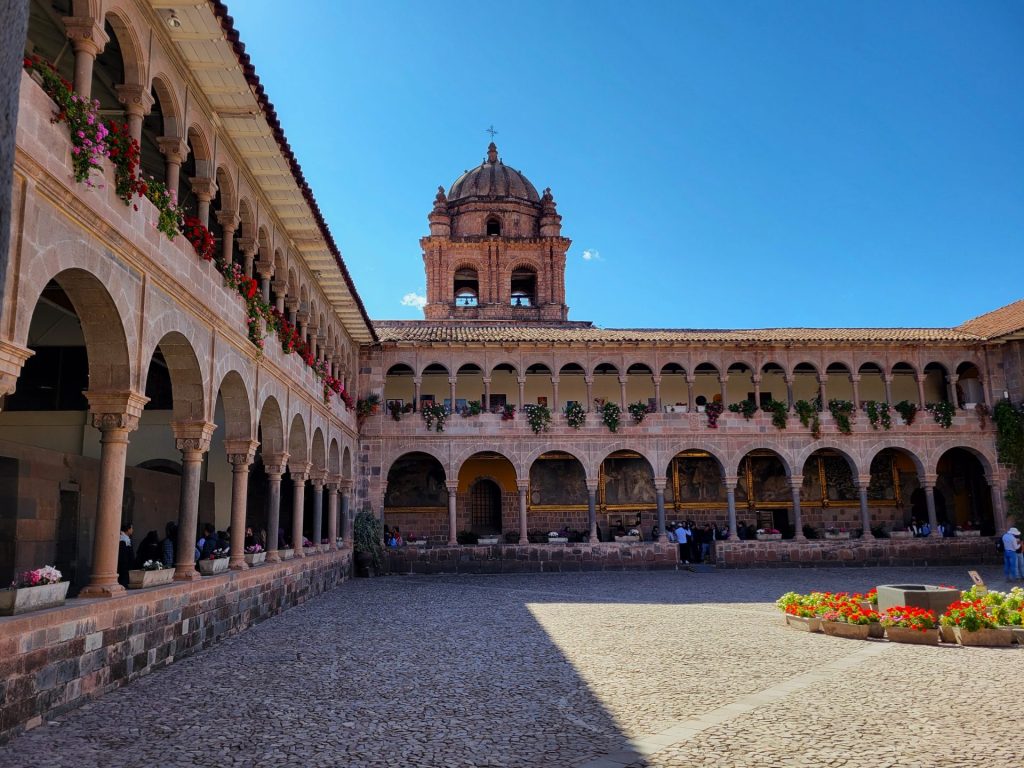
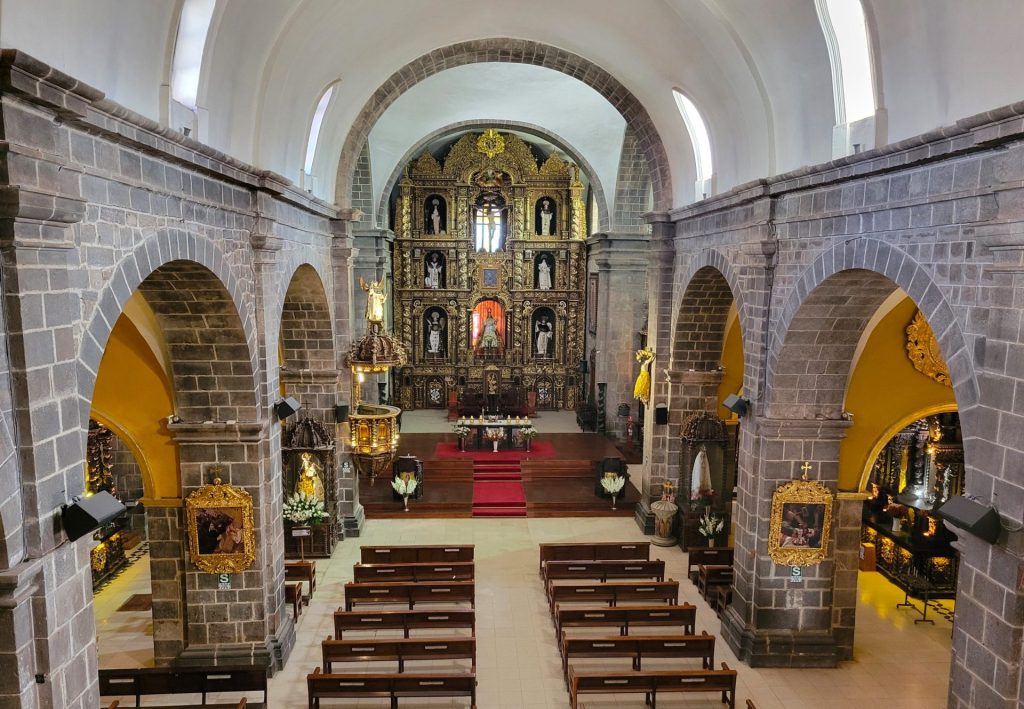
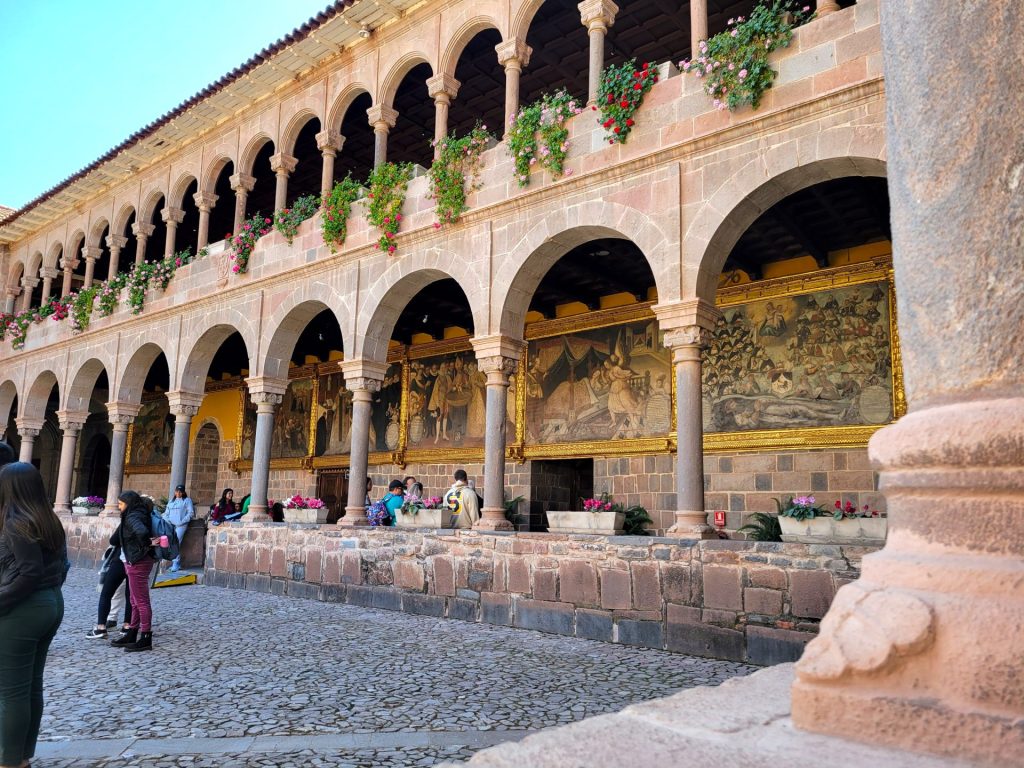
Pre-Columbian Art Museum
The Pre-Columbian Art Museum features well-preserved artifacts from the Inca and other civilizations that predated them. The collection is not huge, but even the oldest artifacts look almost perfect. It felt like I was seeing the best of the best from all of the different cultures and regions from the area. This museum is a great introduction to all of the exquisite pottery, jewelry, and stonework that has been safeguarded for centuries. It was very well done.
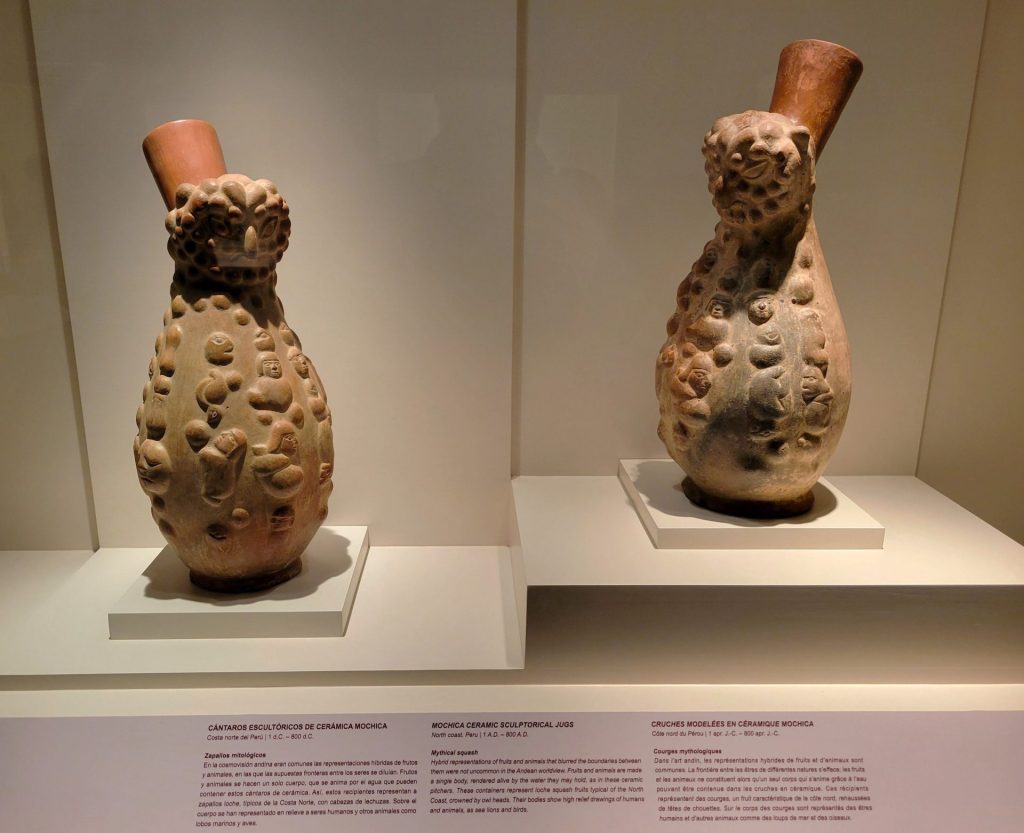
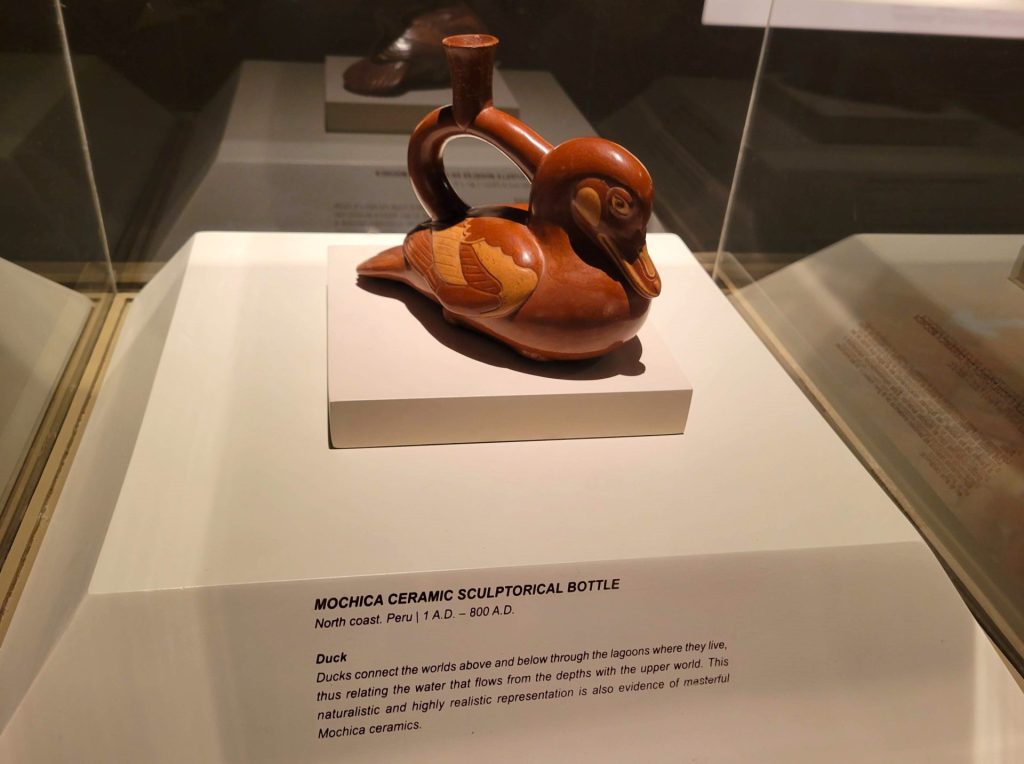
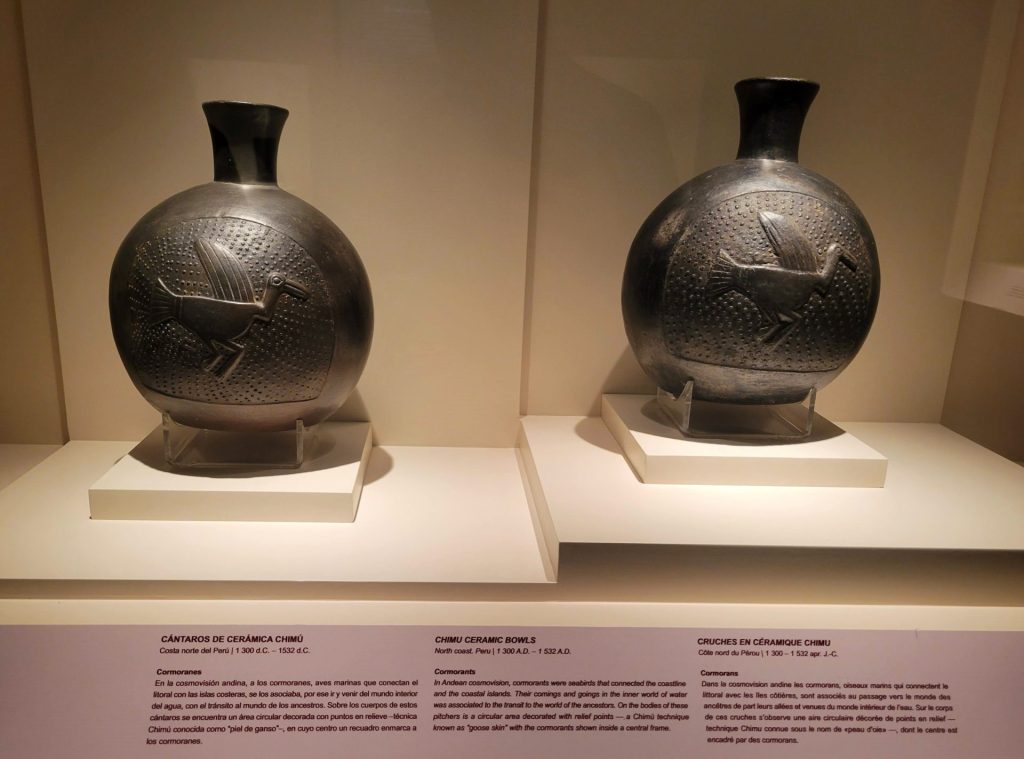
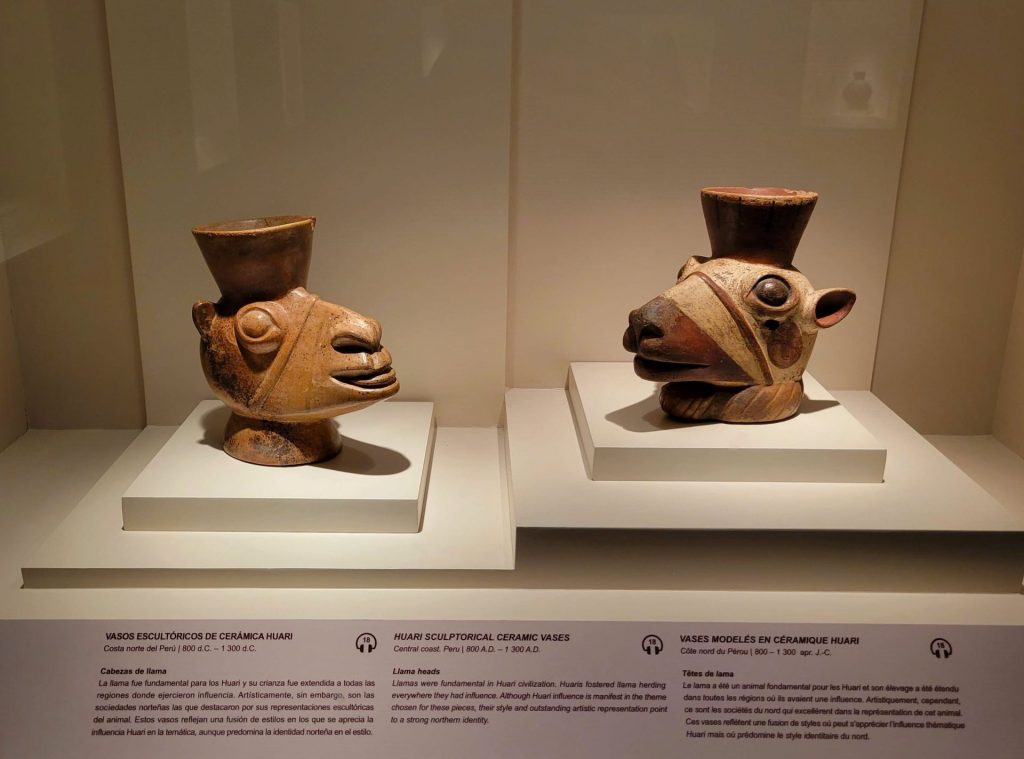
Maximo Laura Museum
This small free museum is dedicated to one artist, Maximo Laura, whose medium is weaving. While that may not sound super exciting, the actual product is incredible. He creates massive tapestries with practically infinite patterns and textures. He’s even won a UNESCO award for being a Living Human Treasure. Katie and I were completely fascinated by his work and we spent several hours here, staring slack-jawed at each tapestry, talking with the docent, and just generally being amazed by piece after piece. The photos definitely don’t do it justice as they can’t convey all of the nuance. But trust me, this is a must see place in Cusco.
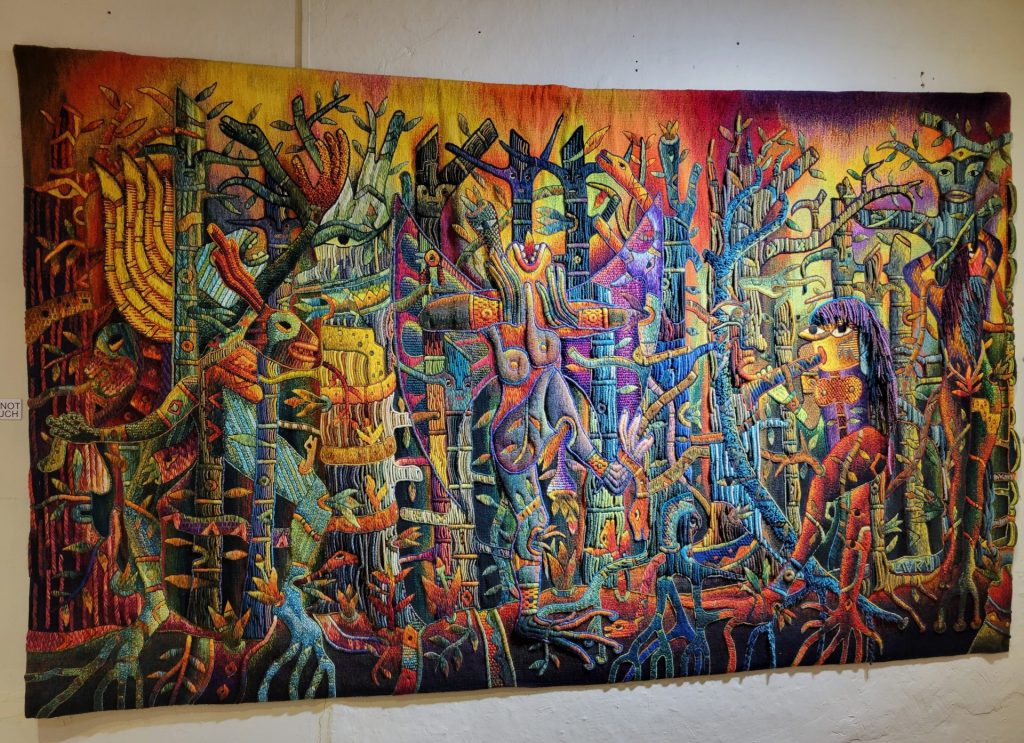
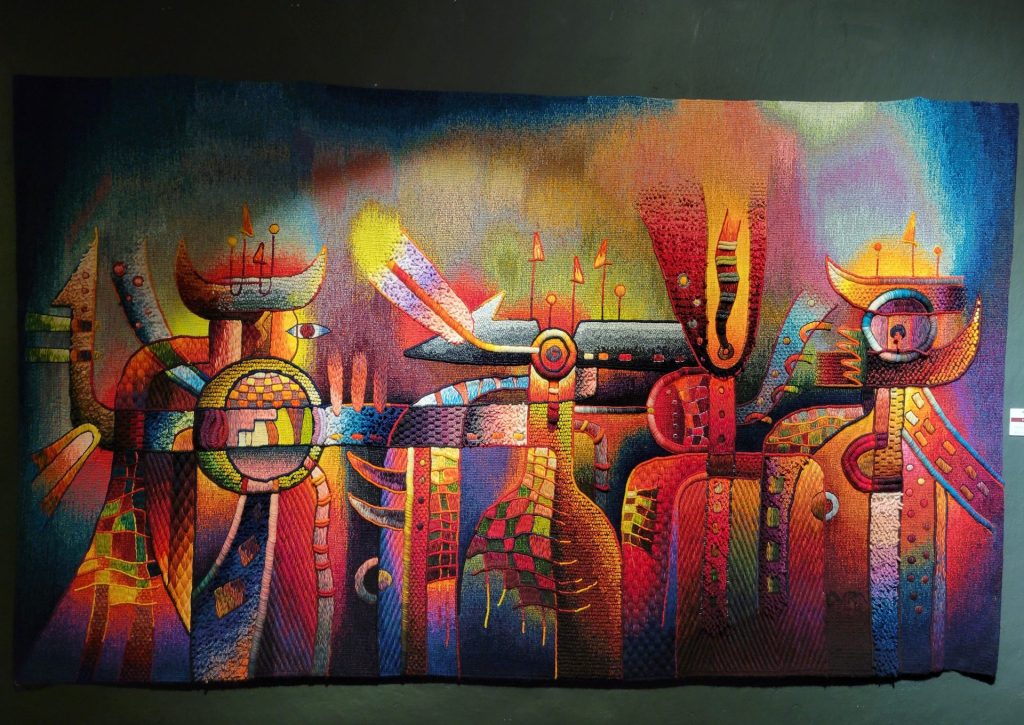
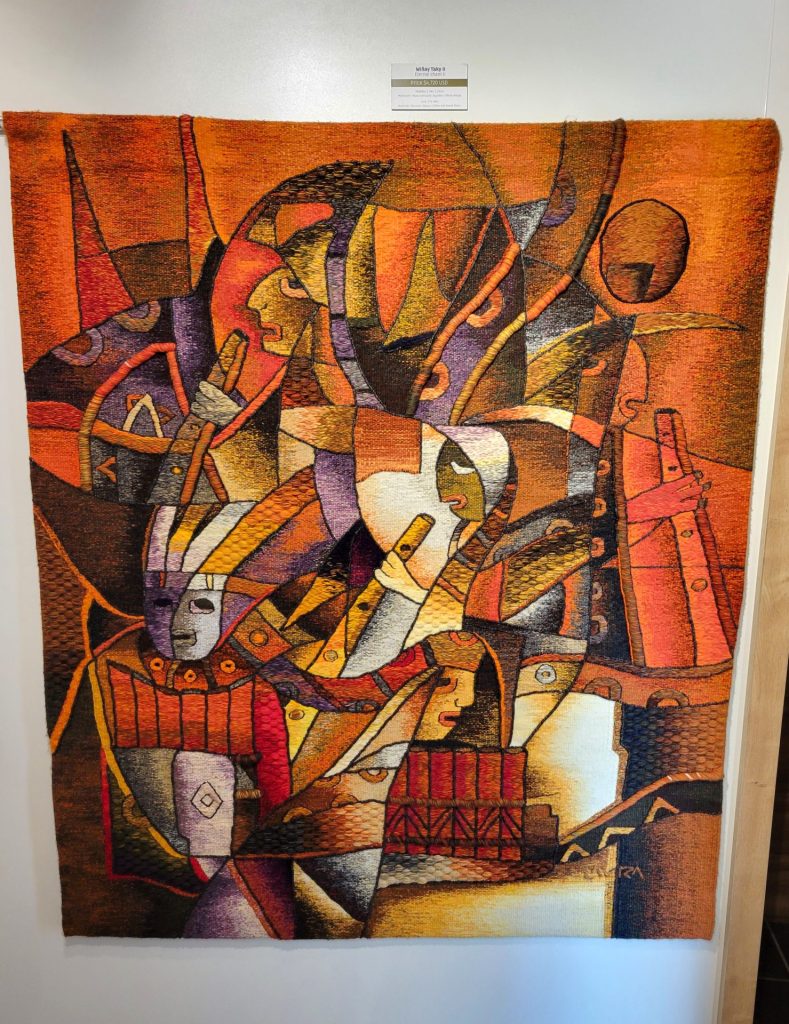
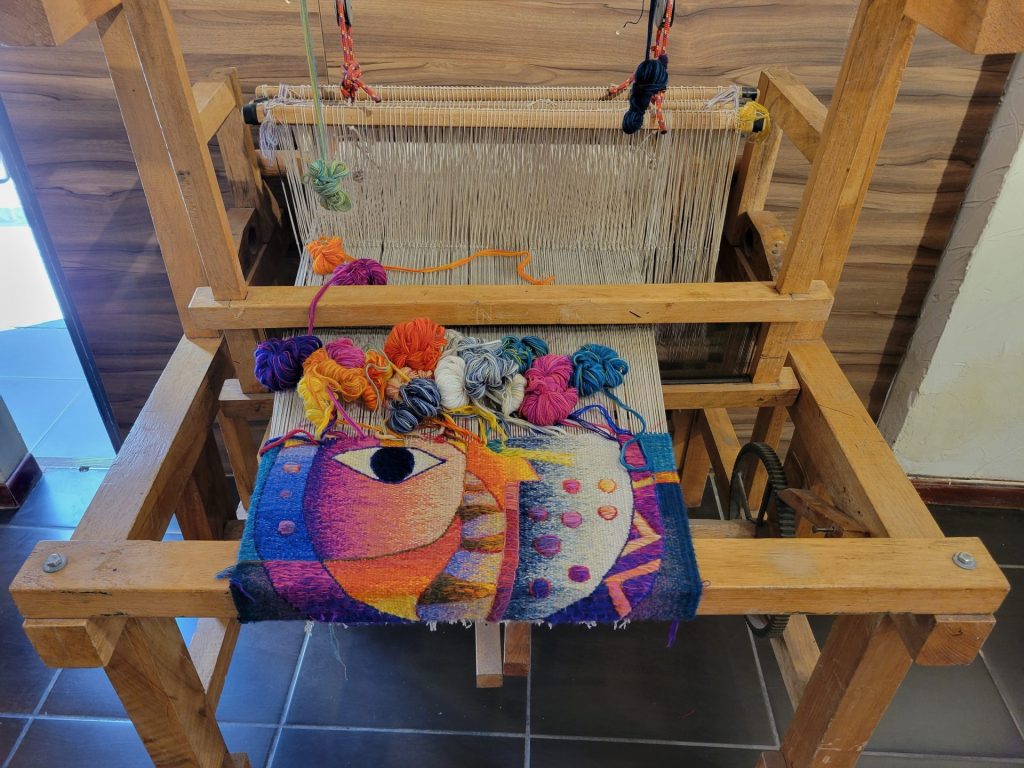
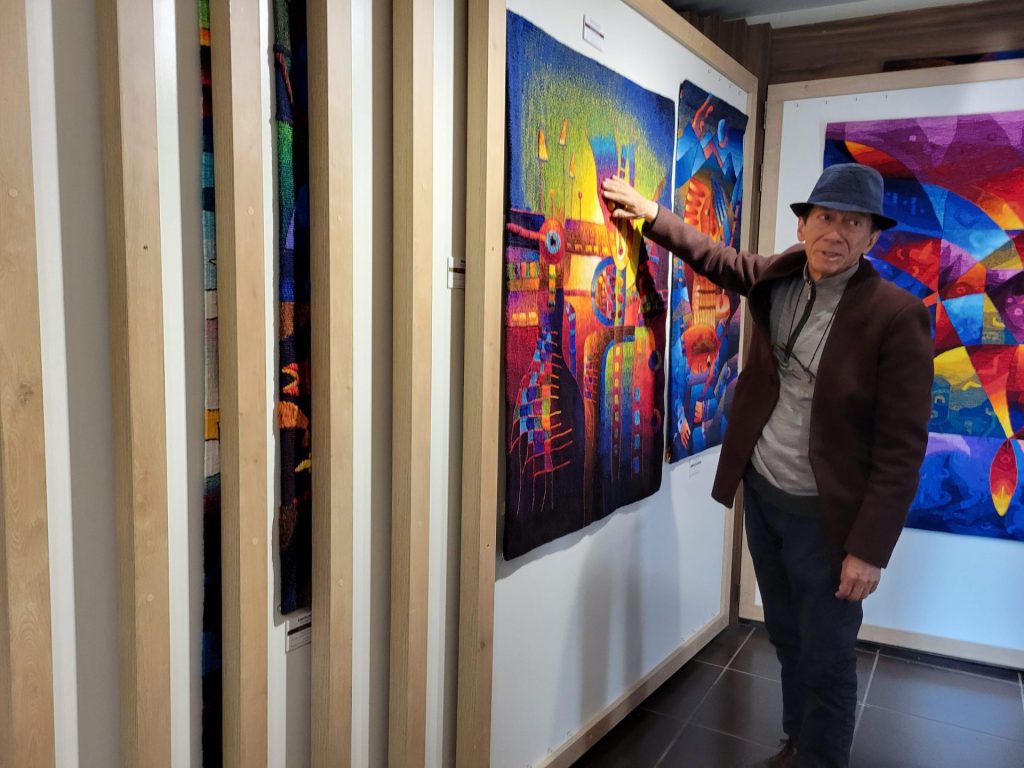
Cusco Tourist Ticket
Cusco offers an extensive tourist ticket that grants access to 10 different archeological parks and 6 museums. We bought the full ticket option which lasts for 10 days and only costs 130 Soles, or about $35. There are also shorter plans of 1 or 2 days that offer entrance to fewer sites (grouped by area) for about half the cost. The official website lists all of the places and prices offered. We visited 6 of the 10 archeological sites but none of the included museums. Based on reviews and popularity, the tourist ticket museums seemed skippable. Instead we paid the separate entrance fees to visit the ones I wrote about above.
Note that the only entrance option to any park or museum that accepts the tourist ticket is by using one of these combo tickets. They can be purchased at the ticket office downtown, or at any of the entrances for included sites. Your time starts the day you buy it, not the day you use it, so plan accordingly.
Pisac Archeological Park
One of the first stops we made with our tourist ticket was Pisac Archeological Park, in the neighboring town of Pisac. This was the best hiking we found in the Cusco area and my favorite part of our stay. In total we spent 5 hours poking around the park ruins and slowly hiking down through the terrace farms until the path eventually spit us out in the town below. The trail provided continuous vistas of the Sacred Valley and offered nonstop mind blowing views. Also sprinkled in were a variety of interesting ruins, birds, and native plants. I can’t overstate how awesome this Pisac hike is.
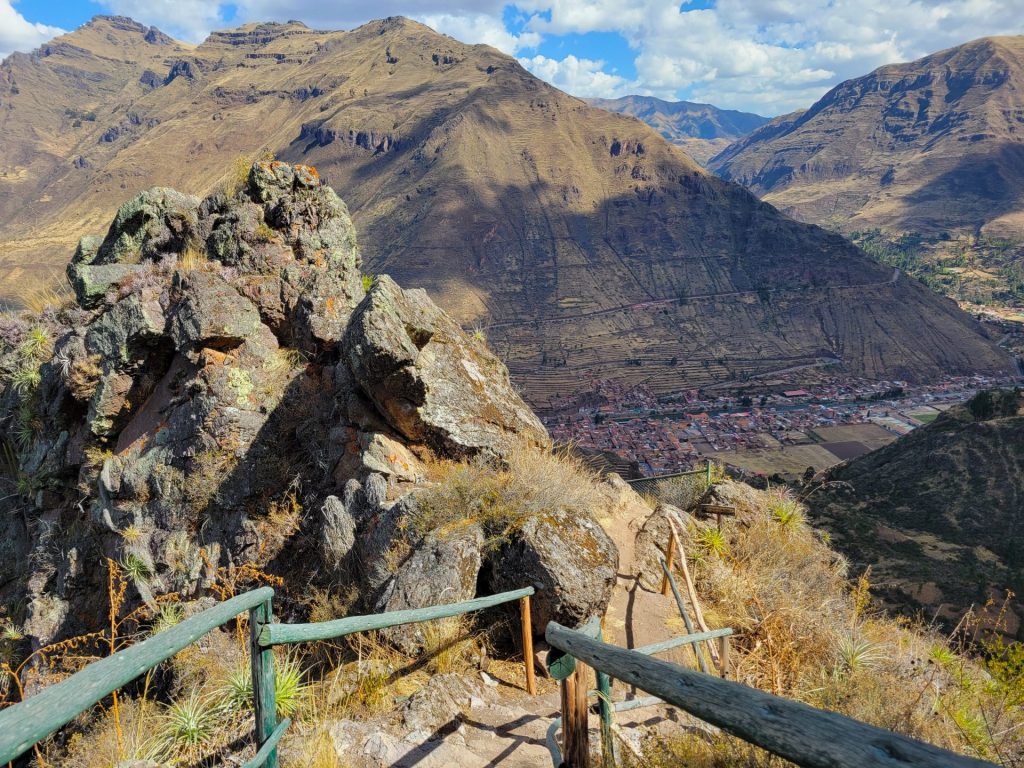
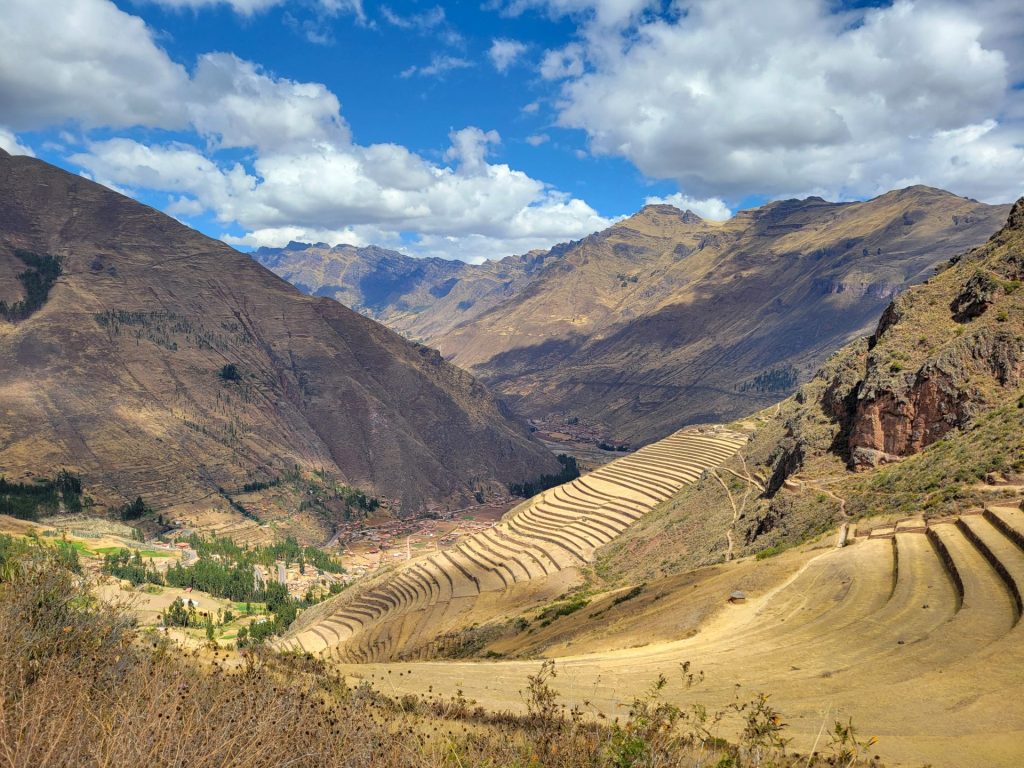
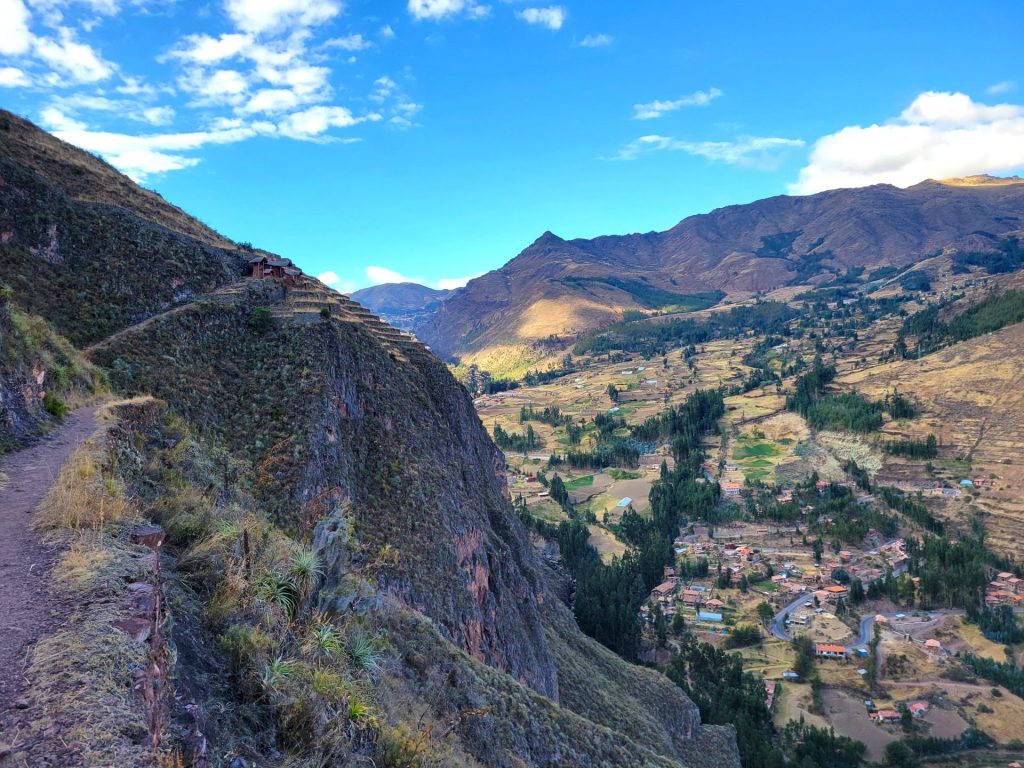
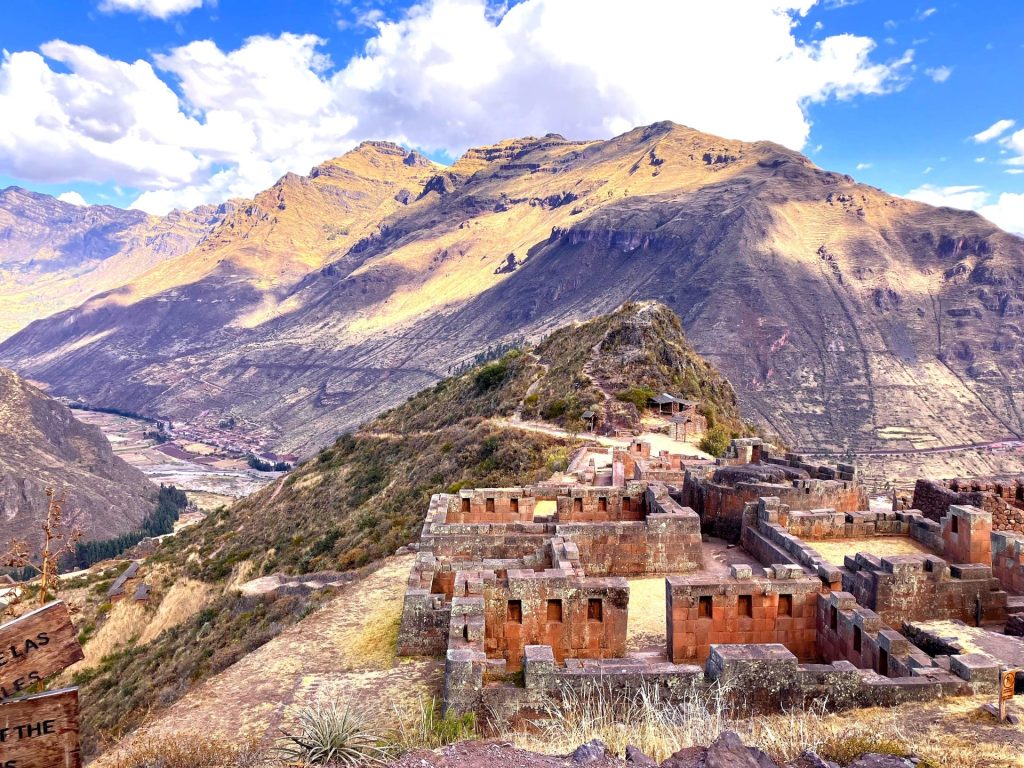
It takes a little bit of effort to get there, but of course it’s absolutely worth it. We caught a colectivo minibus from here for the 45 minute ride to Pisac. It costs 5 Soles each ($1.25). The solicitors of the colectivos are yelling out “Pisac Pisac” from the sidewalk, so they are very easy to find. We just grabbed a seat, then once it’s full, they leave. The colectivo dropped us off at the edge of town, where it’s a 15 minute taxi ride to the top of the park. That costs 25 Soles (+/- 5), or about $6.
It’s possible to take a taxi back to town too, but the hike down was the best part. It’s also possible to walk up to the top of the park from the town, but one would have to be in top notch shape to make that long steep climb at high elevation. I’d recommend the taxi up. To get back to Cusco, it was easy to catch a return colectivo just across the bridge into town right about here. I used a handful of blog posts from Along Dusty Roads to figure out how to do this.
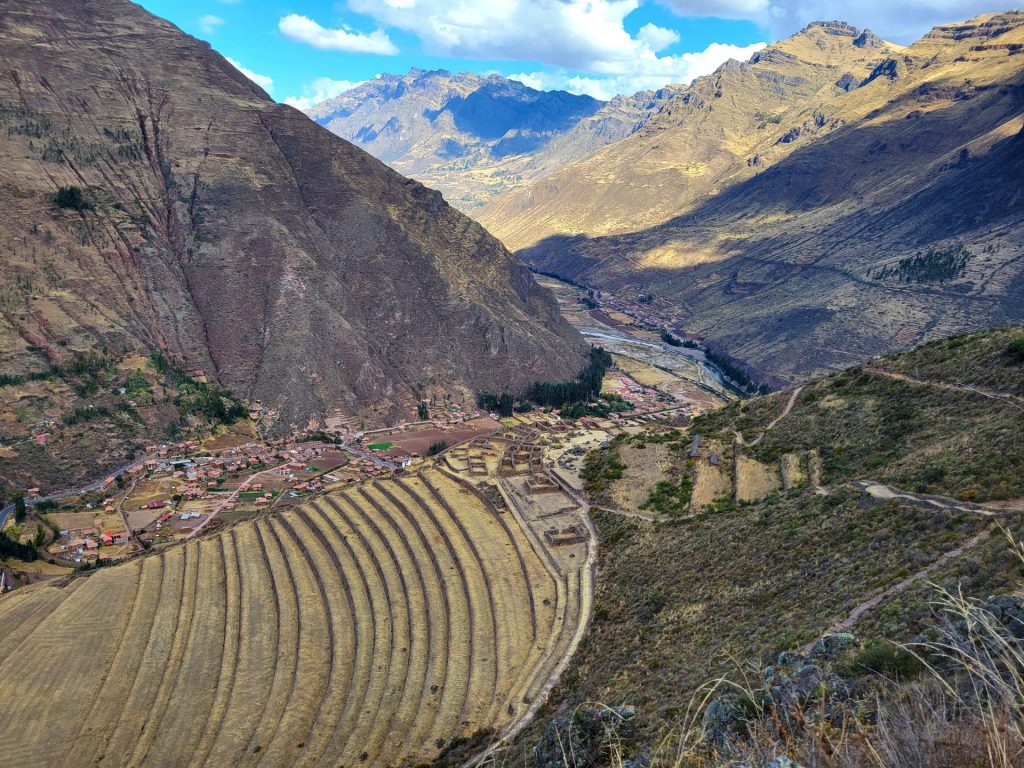
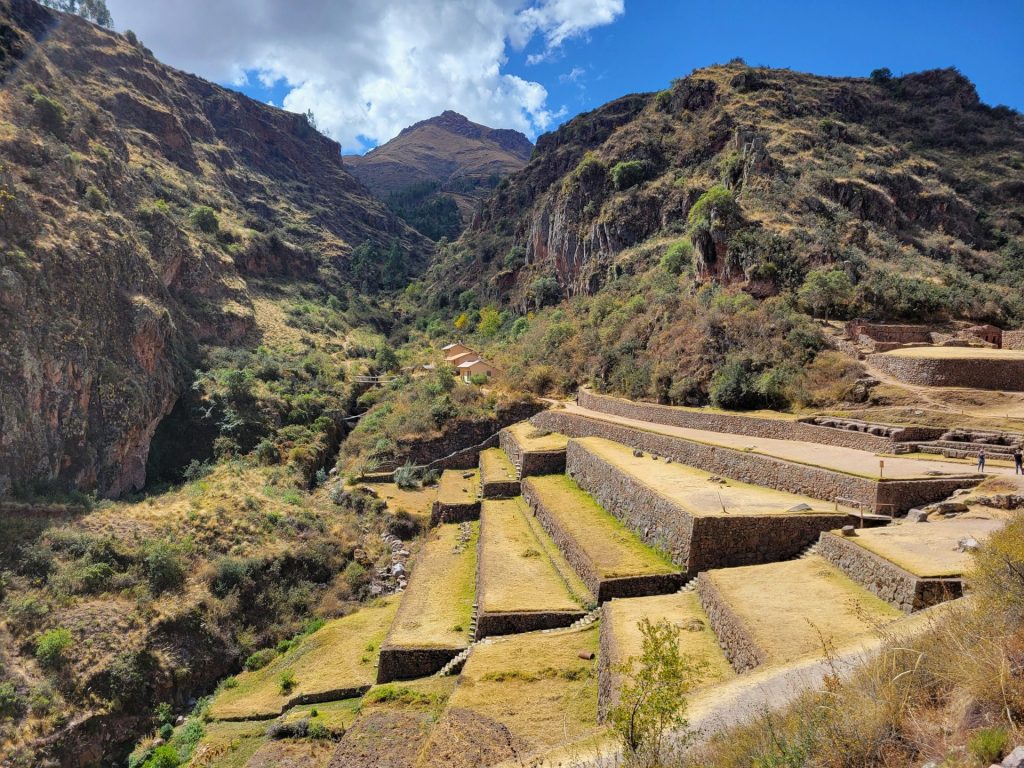
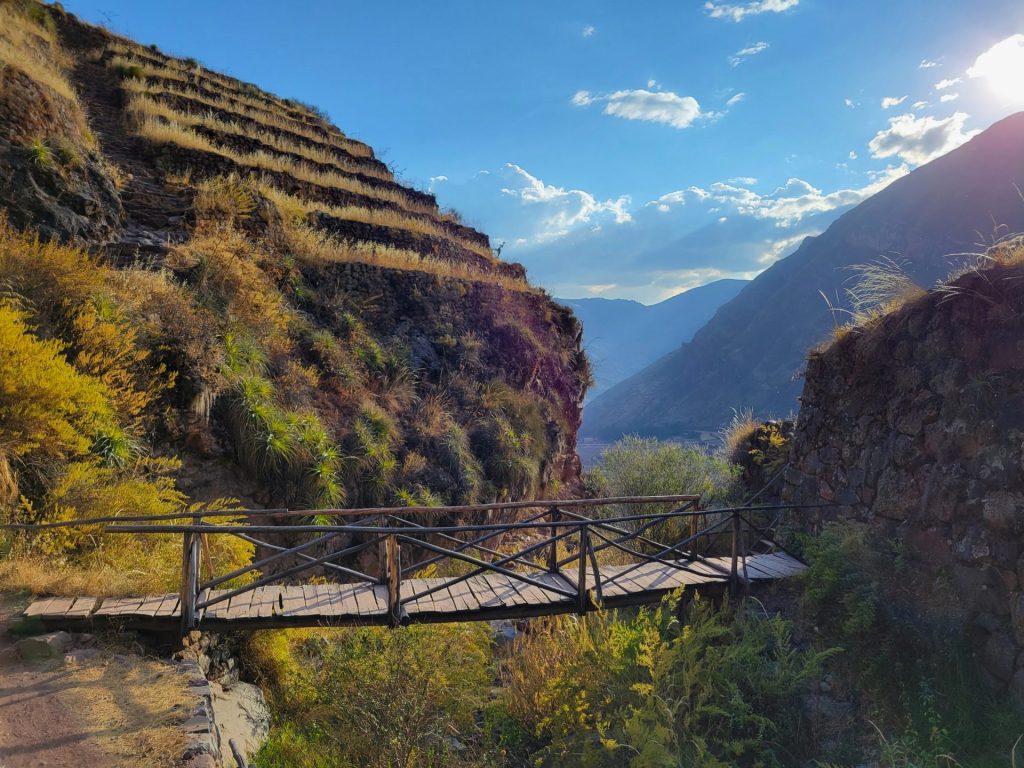
Tipón Archaeological Park
Also part of the tourist ticket, the sparsely visited Tipón Archaeological Park was a fun place to hike as well. It’s easy enough to get to via local bus. We caught one at a bus stop here, just looking for “TIPON” across the windshield and flagging it down. It’s 3 Soles for the 40 minute ride. The best part is that it’s impossible to screw up where to get off since downtown Tipón is the last stop. We read that there might be taxis waiting, but we didn’t see any so we summoned an Uber to drive us up the hill to the entrance.
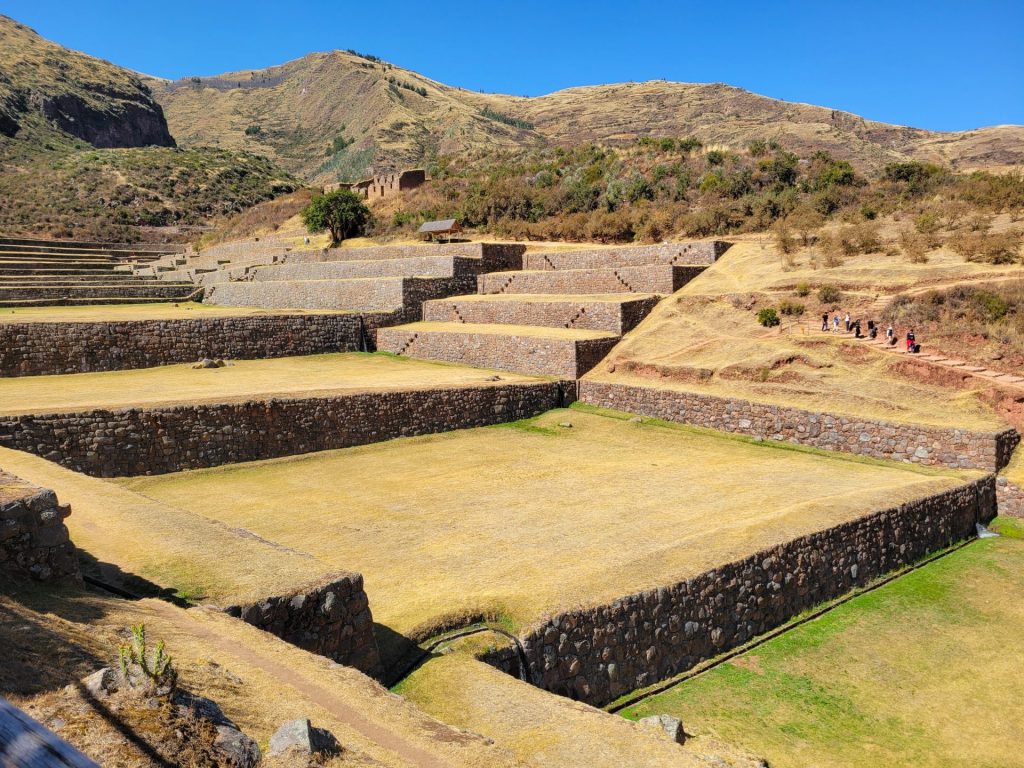
The main part of the park has wide flat levels and water channels that were used for irrigation. That’s interesting, but the most fun part was hiking some of the many trails. We climbed halfway up the mountain toward a shaded bench, and then just cut over to the other side of the site following one of the many water channels. Once there, we got to explore ruins of a lookout area with great views. Then we hiked back down where we started, out the exit road, and found a path just outside the gate that we followed all the way back into town. There we caught a return bus to Cusco. I used a blog post from The RTW Guys to help figure out the logistics for this park, although we hiked a different path than they described in their post. There are a number of different, lightly traveled trails that can be hiked where it feels like you have the place to yourself. It’s a great place to go exploring.
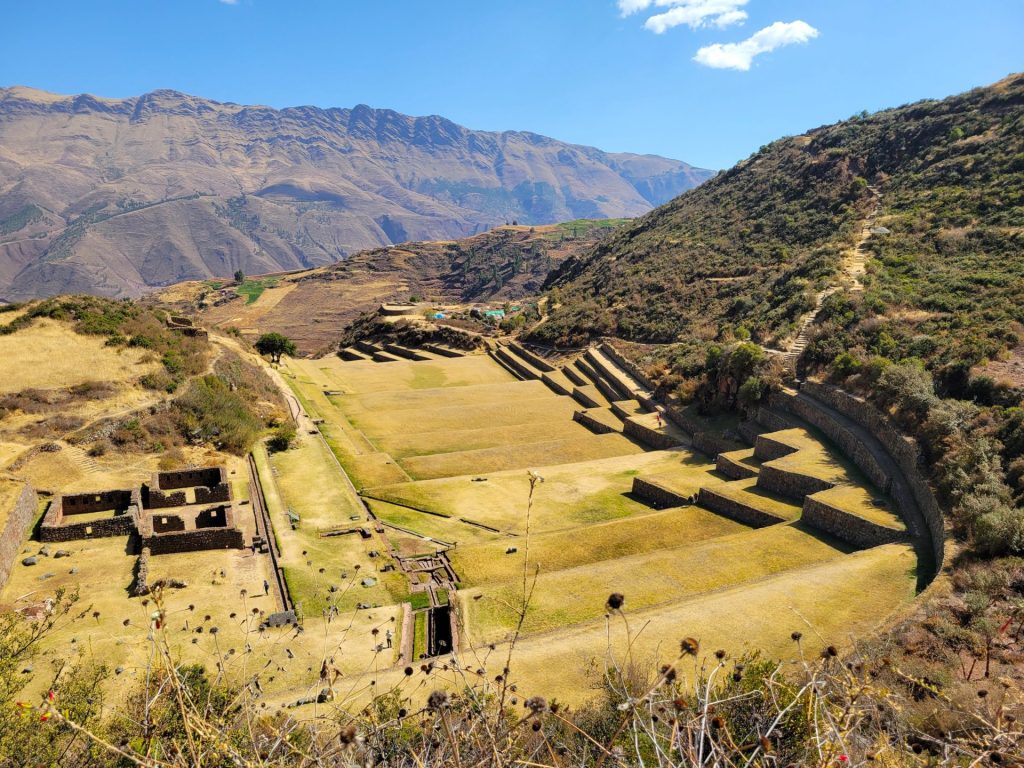
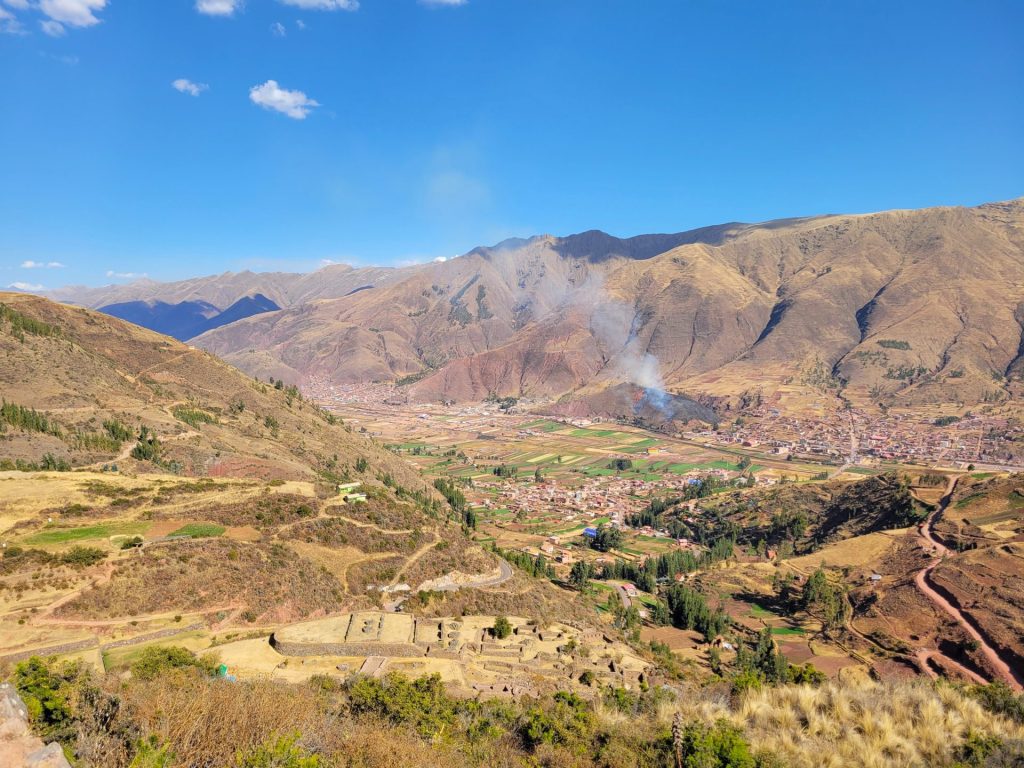
Cristo Blanco
On the hill above the city of Cusco is a large white statue of Jesus. It’s a common free tourist stop with many city tour buses pausing here for 15 minutes before continuing their routes. It has a top notch view of Cusco in the valley below. Along with the vista, we also found a dozen vendors selling everything from trinkets to sweaters to ice cream. And no tourist stop would be complete without a woman in traditional dress soliciting photos with a llama or alpaca. But the best part of Cristo Blanco is not the statue or view, its the easy access to Saqsayhuaman.
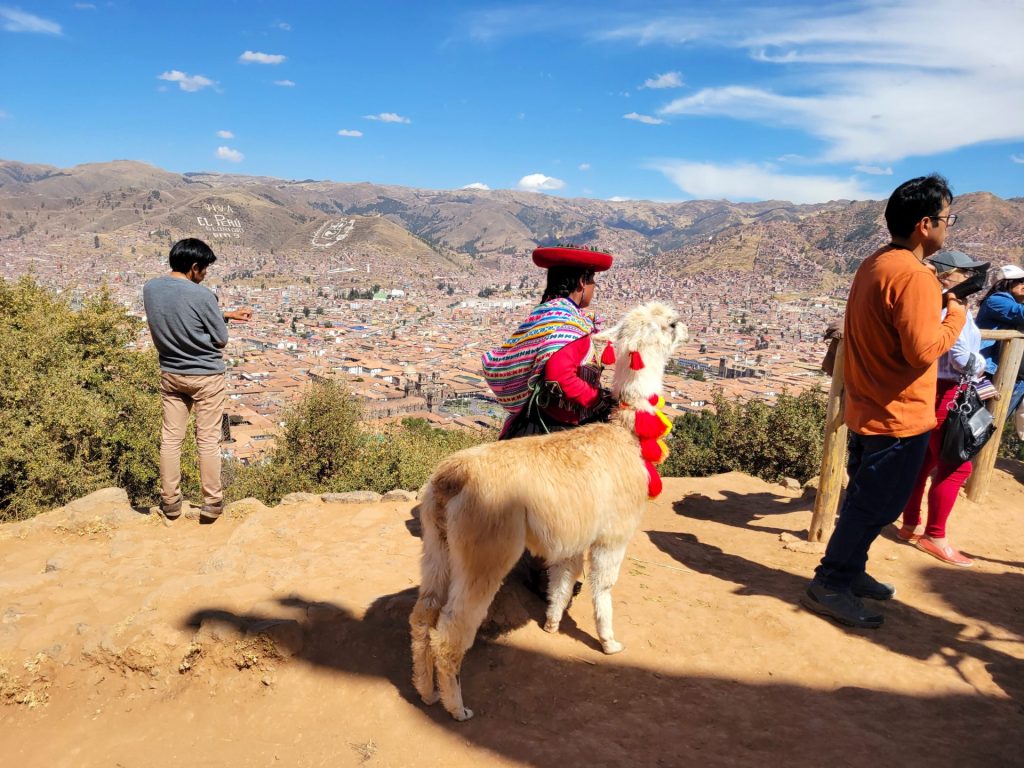
Saqsayhuaman Ruins
From Cristo Blanco, it’s only a short downhill walk to the closest Saqsayhuaman park entrance. That’s by far the best way to get to one of the most unique places in town. Pronounced similar to “sexy woman,” this park has a perfect combination of man made and natural stone features. While there are many examples of expert masonry throughout Cusco, the large rock walls here are unbeatable. They were constructed with massive variable-sized boulders that fit together almost perfectly without mortar. It’s hard to fathom how this stonework was completed with such tiny gaps in an era before power tools and heavy machinery. And it’s stayed that way for centuries now.
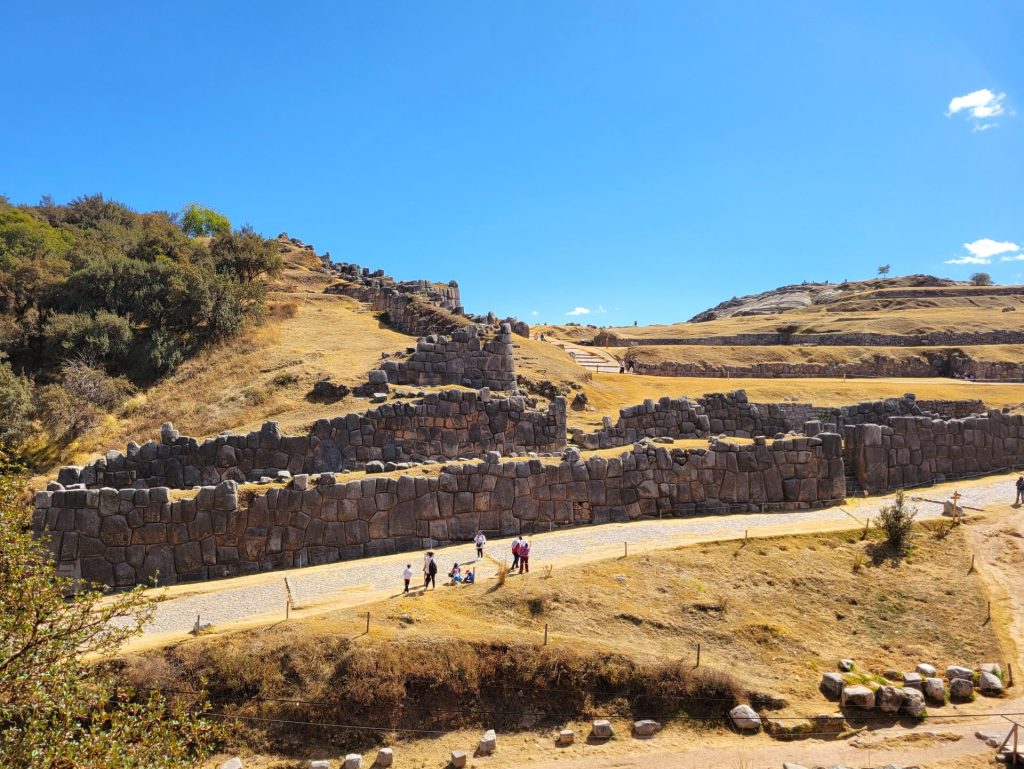
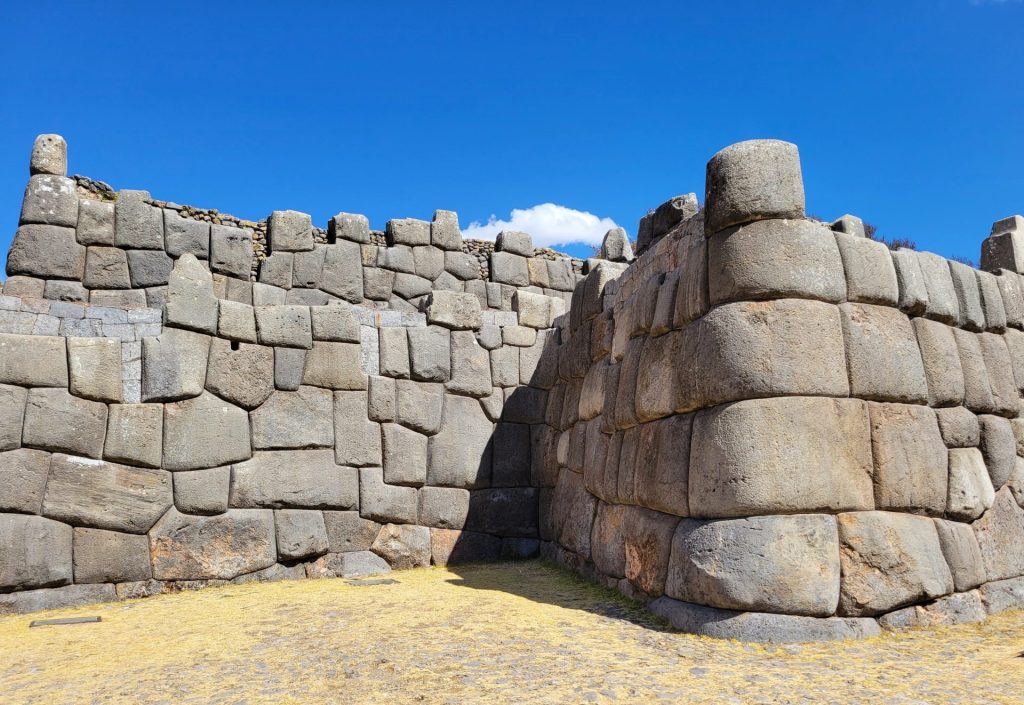
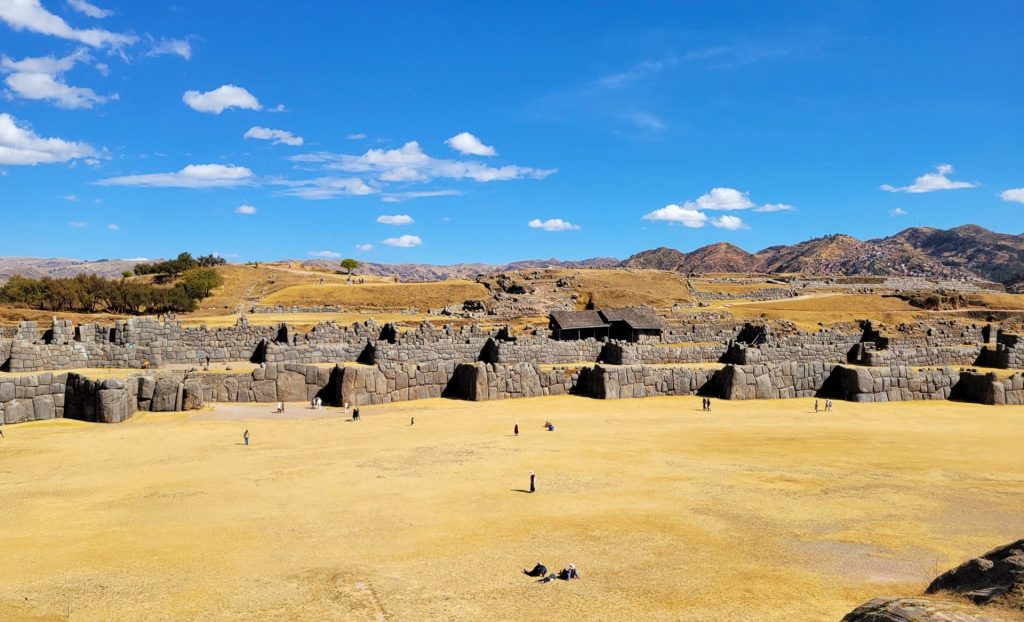
On the other side of the park are what I can only describe as flowing rock waves. The tall mounds of smooth igneous rock really draw the eye. This is the only place in the region that this type of unique curving stone is found. If you want to do more than just look, it’s possible to use the landscape as a slide. We were entertained by a few adventurous visitors whooshing down the steep slippery slope. The combination of natural and man-made features made this park a hit. Have your tourist ticket handy.
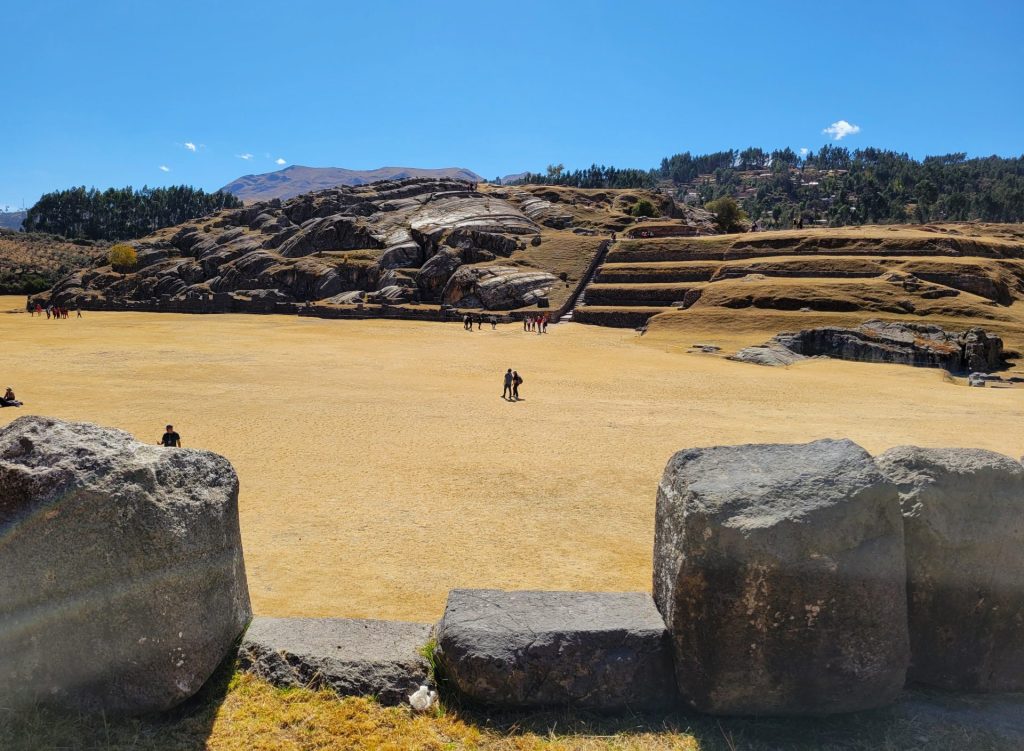
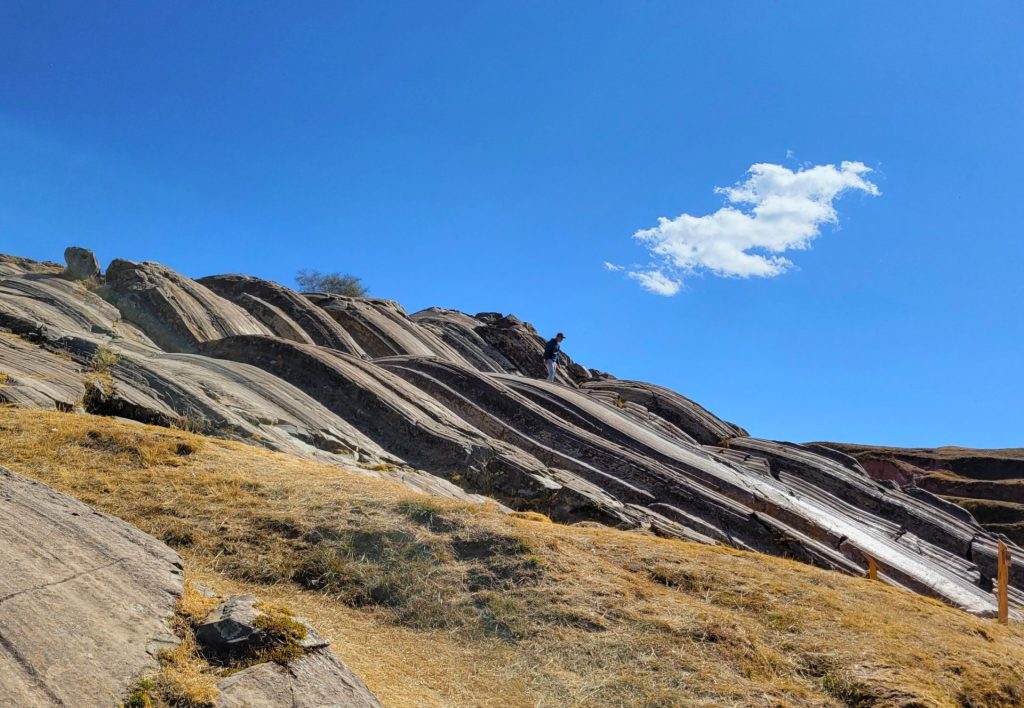
Puka Pukara & Tambomachay
Puka Pukara is a former military lookout fort. It’s likely that this place was used as a first line of defense and to possibly screen travelers along the road. There’s not a ton of evidence of activity remaining aside from the base of the walls, but the views are excellent.
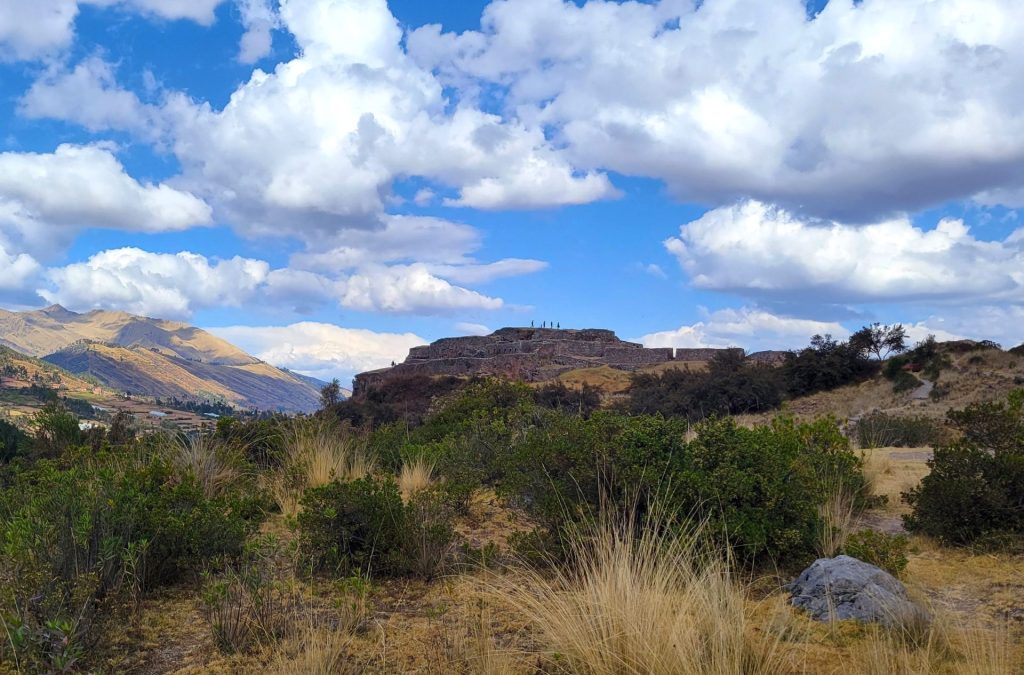
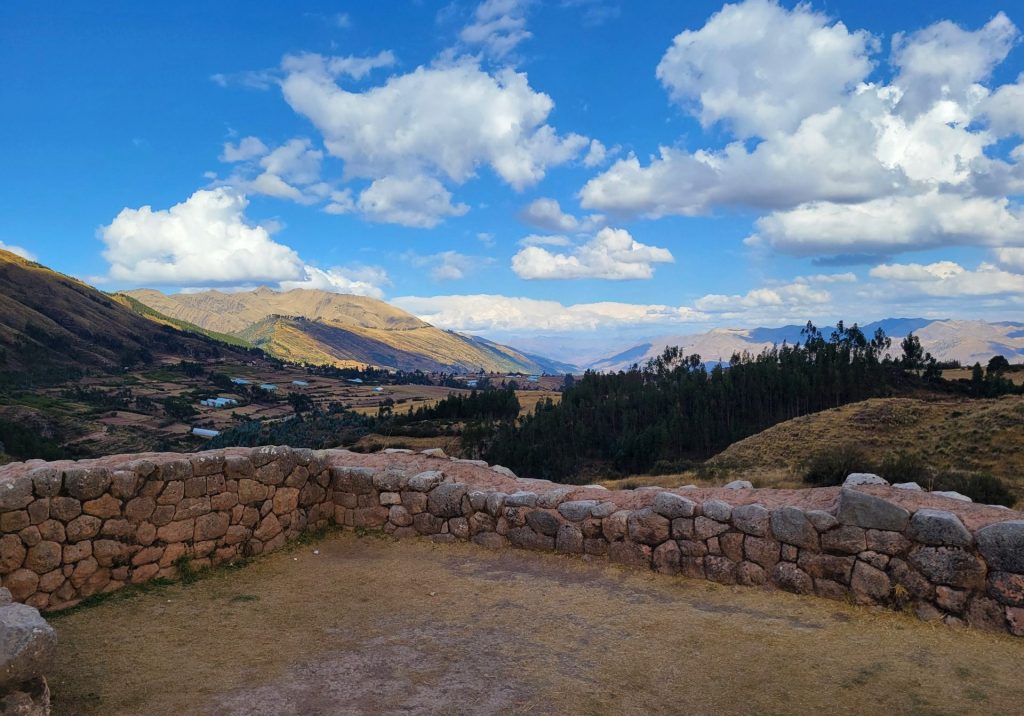
Tambomachay holds a bit more mystery. It’s not clear exactly what the original purpose of the site is. Situated near natural springs, the Inca engineers steered the flow into three small waterfalls. Speculation is that this could’ve been a bath or a spa, or possibly a place used in religious ceremonies, but it’s unknown which.
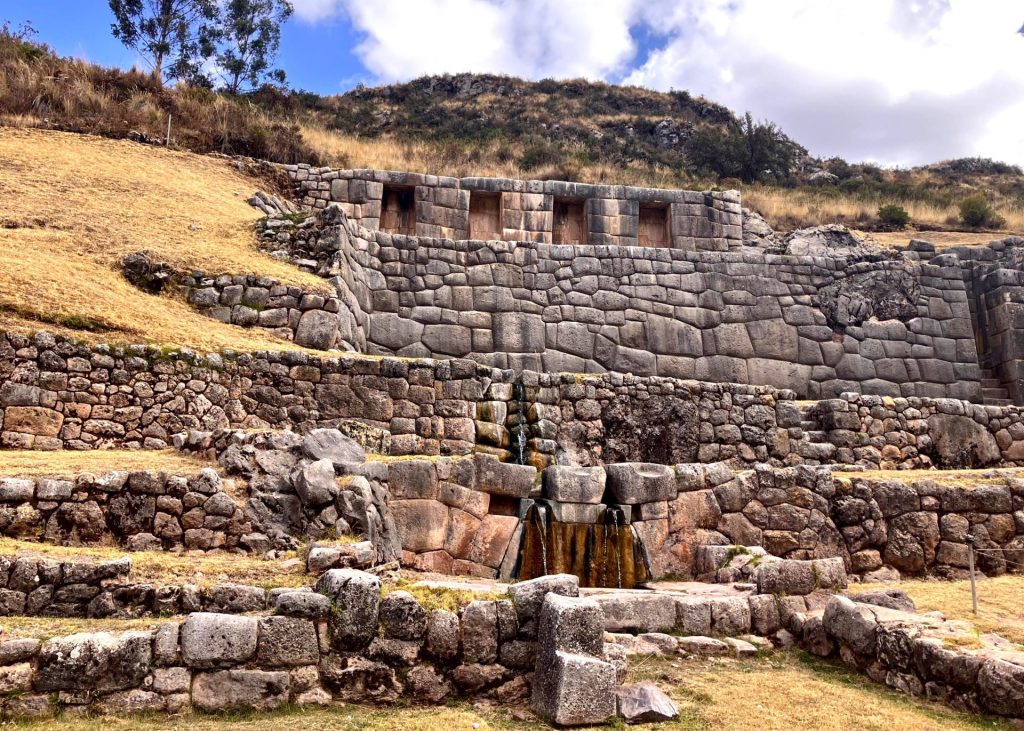
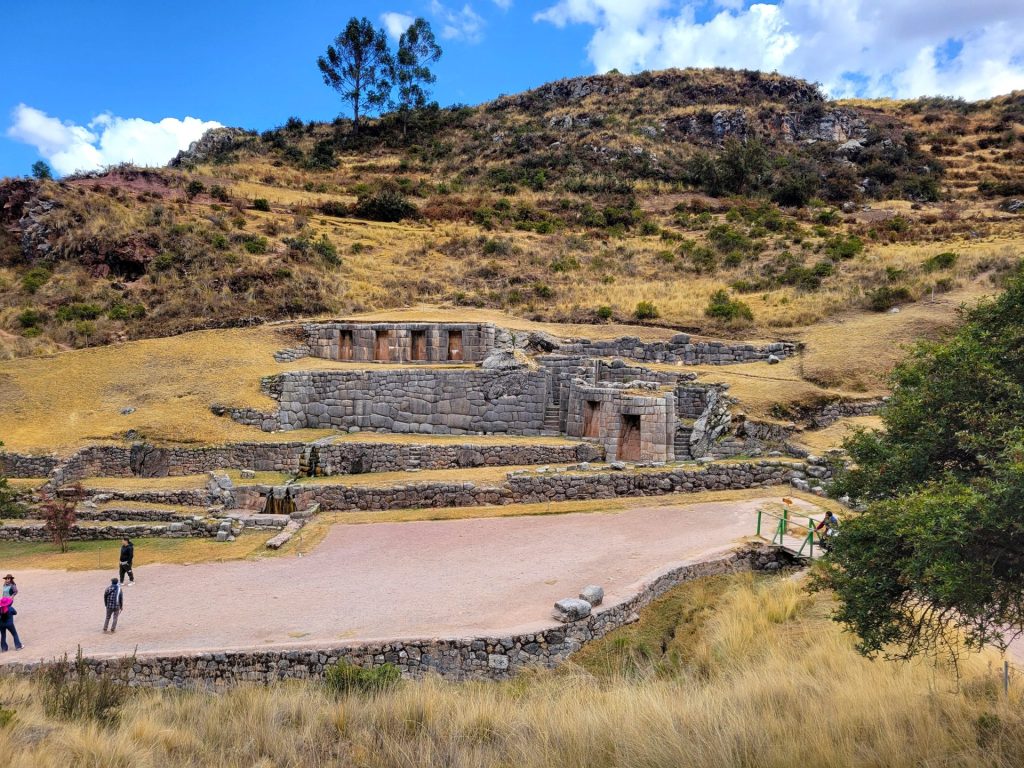
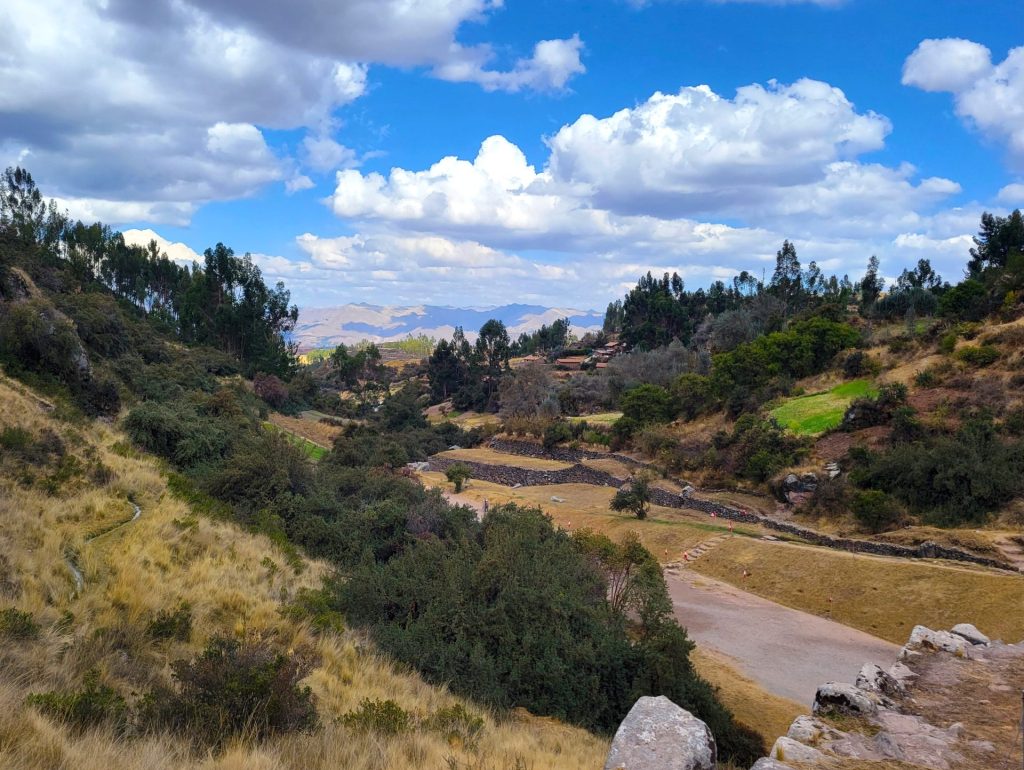
These two smaller sites are also part of the Cusco Tourist Ticket and right across the road from each other, so they are meant to be seen together. To get there, catch any city bus that’s heading towards Cristo Blanco or any colectivo heading towards Pisac and just tell them where you want to get off. When you’re done, just walk right across the road and flag down the next bus heading back into town. It’ll only cost 2-3 Soles each way.
Temple of the Moon
Another great place to hike is the lightly trafficked Temple of the Moon. This park is not that well defined, and its free entrance means that it’s sometimes hard to tell where the park ends and farm or grazing land begins. The actual temple is not that interesting, as it’s basically just a small cave, but there are dozens of trails that lead up into the hills where there are great views and scattered ruins.
Shepherds tend to sheep, llamas, and alpacas on these lands too, so it’s common to see these animals here. In addition, it’s a great place for bird watching and we were able to add a couple of new birds to our list, including the Andean Flicker. The park is accessible by foot after a long climb up the hill, or via any of the city buses that would stop at Cristo Blanco or Puka Pukara.
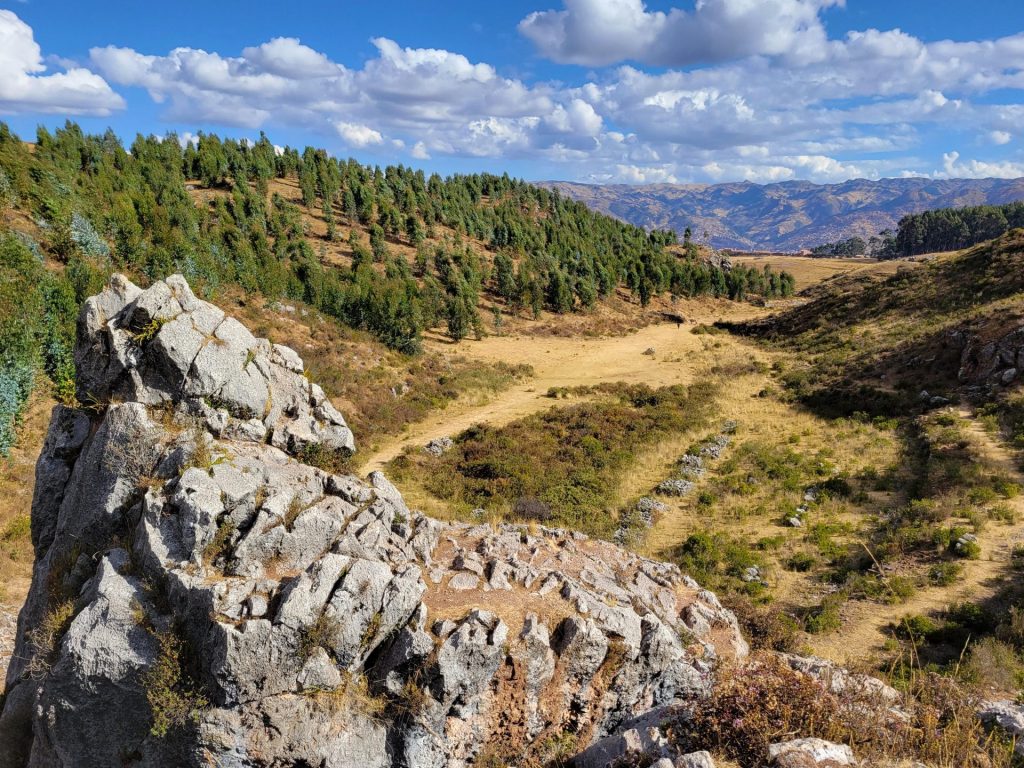
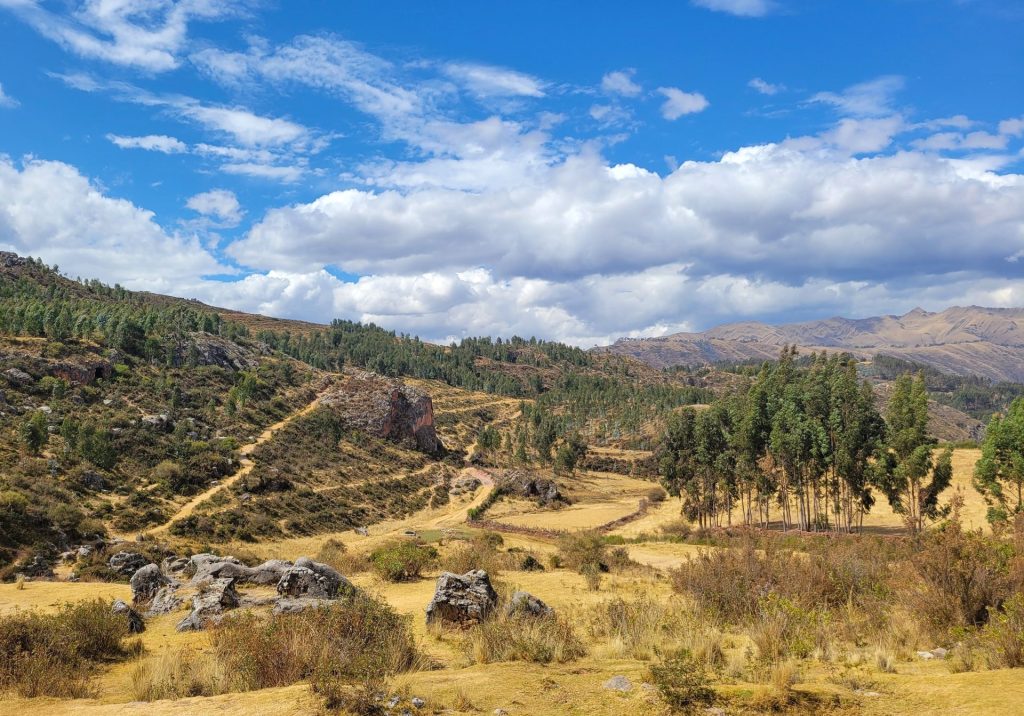
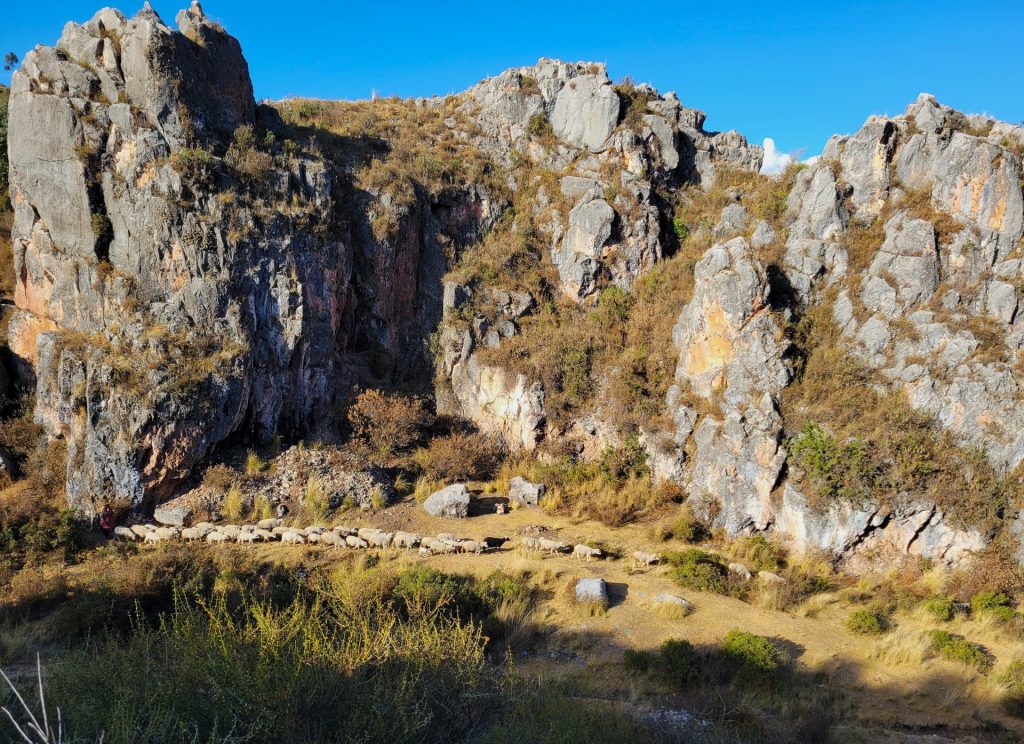
Machu Picchu
No trip to Cusco is complete without seeing the iconic Machu Picchu. But the most sacred site of the Incas is not easy to get to. There are a lot of moving parts to arrive at Machu Picchu from Cusco: getting to the train station outside of town, arranging train tickets, securing bus tickets to the top of the mountain, selecting timed entrance tickets to the site, choosing one of the three circuits plus any of the dozen available add ons, picking a tour guide (now required), and then doing all of the logistics in reverse. We also didn’t get around to booking any of this until our visit was just a couple of weeks away, even though it coincided with high season (whoops). As such, our DIY options were somewhat limited. We opted to use one of the myriad of tour companies instead. In this way, we paid a single upfront price and had all of the logistics, tickets, and guide covered.
Our day started by getting up at 4:00am to make our private shuttle for 5:30am pickup time. After a 45 minute drive to the train station, we waited for 30 minutes before departing on our 3.5 hour train ride to Aguas Calientes. The train car was pretty nice with comfortable seats and a roof that was mostly windows so that we could see all of the mountains towering above. However the tracks were poor, making the top speed quite low and the actual riding experience very jostling. At least the scenery was good for the long journey.
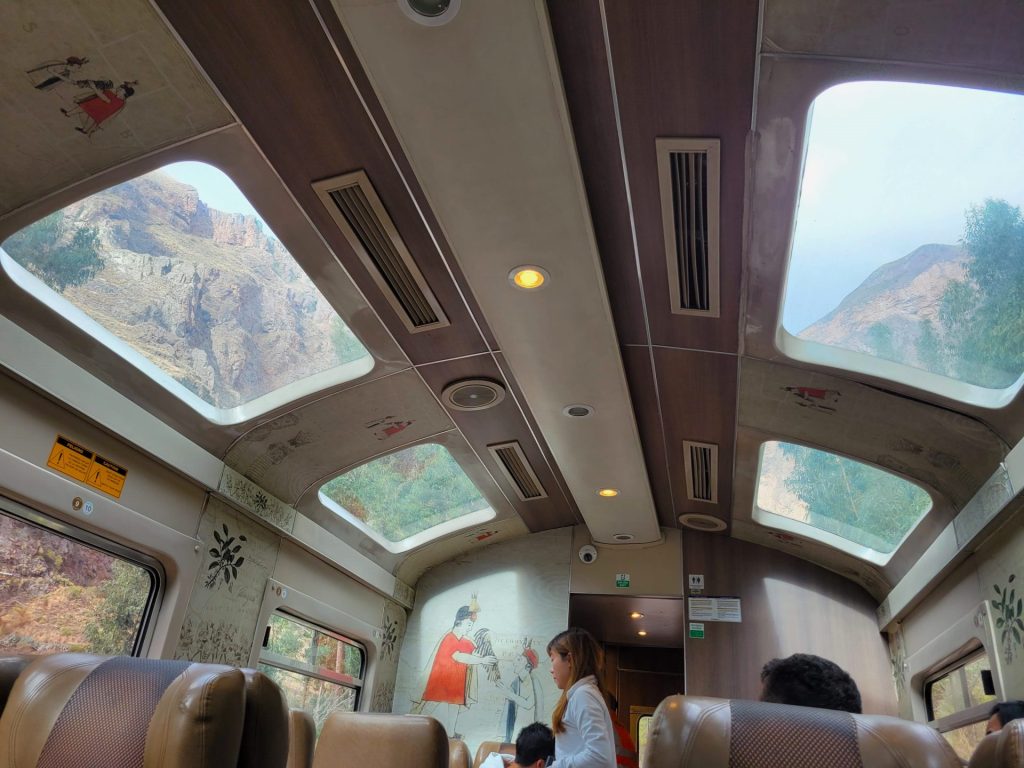
After arriving in town, we were directed to get in the line for the bus. That queue was about 200 yards long and it took an hour to get through. Apparently they usher 6000 people per day up the mountain, and it felt like most of them were waiting with us. Once we finally made it onto the bus, the ride up really helped set the stage for how remote Machu Picchu actually is. It takes about 25 minutes to drive almost straight up the side of the mountain, winding through about 20 different switchbacks.
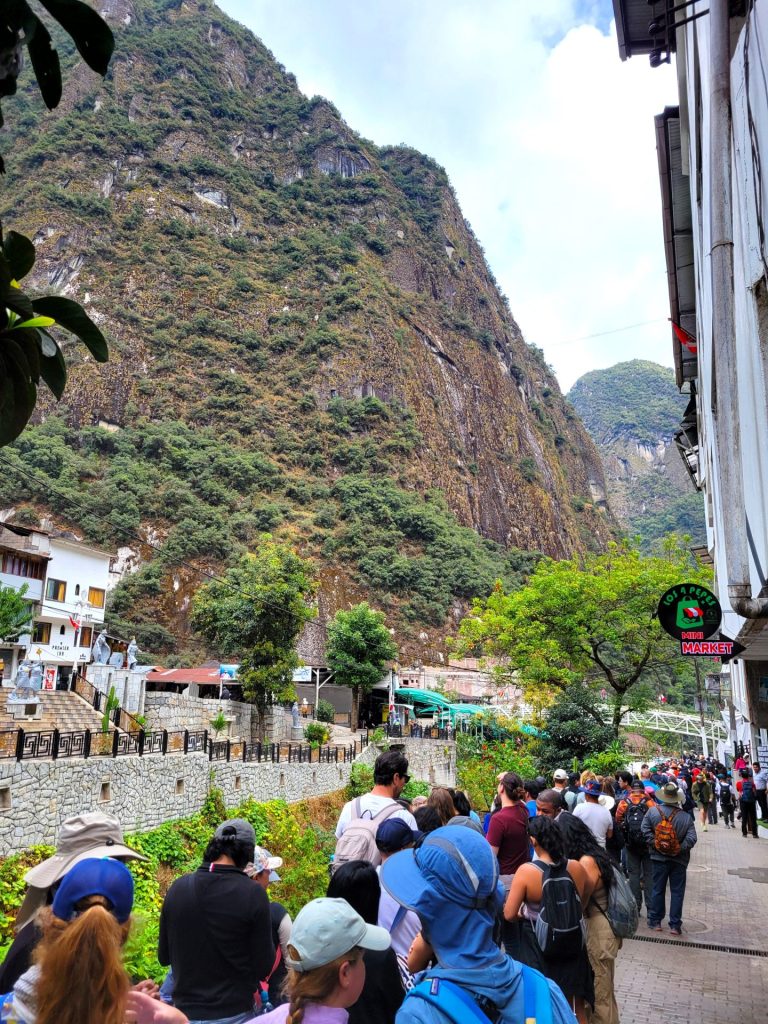
When we got to the top, we had a problem. Our guide was nowhere to be found. He was trying to Whatsapp with me, but cell service was so bad it was nearly impossible. After about a half hour of waiting, he finally showed up. But then he had to use the restroom, which is another time consuming process considering all of the people around. He directed us to enter the site ahead of him while he did his thing. Our tickets were for a scheduled entry between 11:00am-12:00pm, but it was already after 12:00pm when we hit the gate. Luckily missing our window wasn’t an issue. But then for some unknown reason our guide had trouble getting through the entrance himself. So we waited another 15-20 minutes for that to be solved.
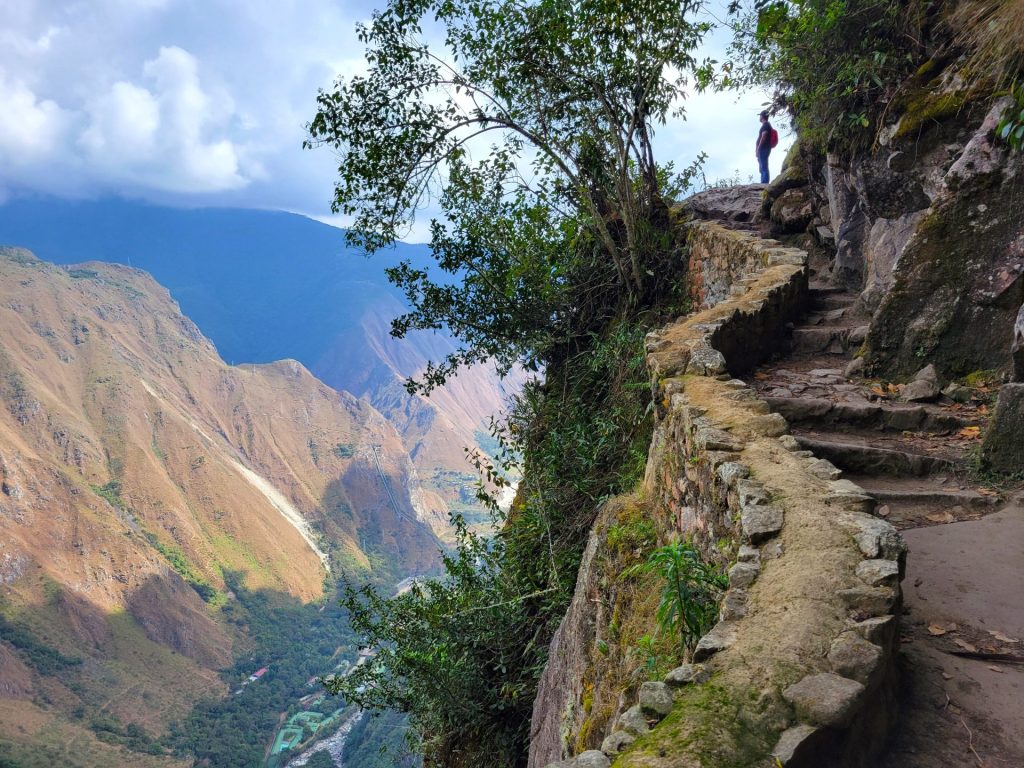
At this point, it’s close to 1:00pm and our return train is scheduled for 4:30pm. It takes another hour to stand in the return bus line, 30 minutes to ride the bus and walk to the train station, and our tour through Machu Picchu was supposed to be 2.5 hours long. We were never going to make it!
We expressed our concerns to the guide and he proceeded to rush us through the first part of our tour while assuring us that it would be okay. In this case, rushing mostly meant climbing steep hills at a fast pace. Luckily we had acclimated first. But once we got to the good stuff, we slowed down since it seemed better to miss the train than hurry through the only time we’d ever be in Machu Picchu.
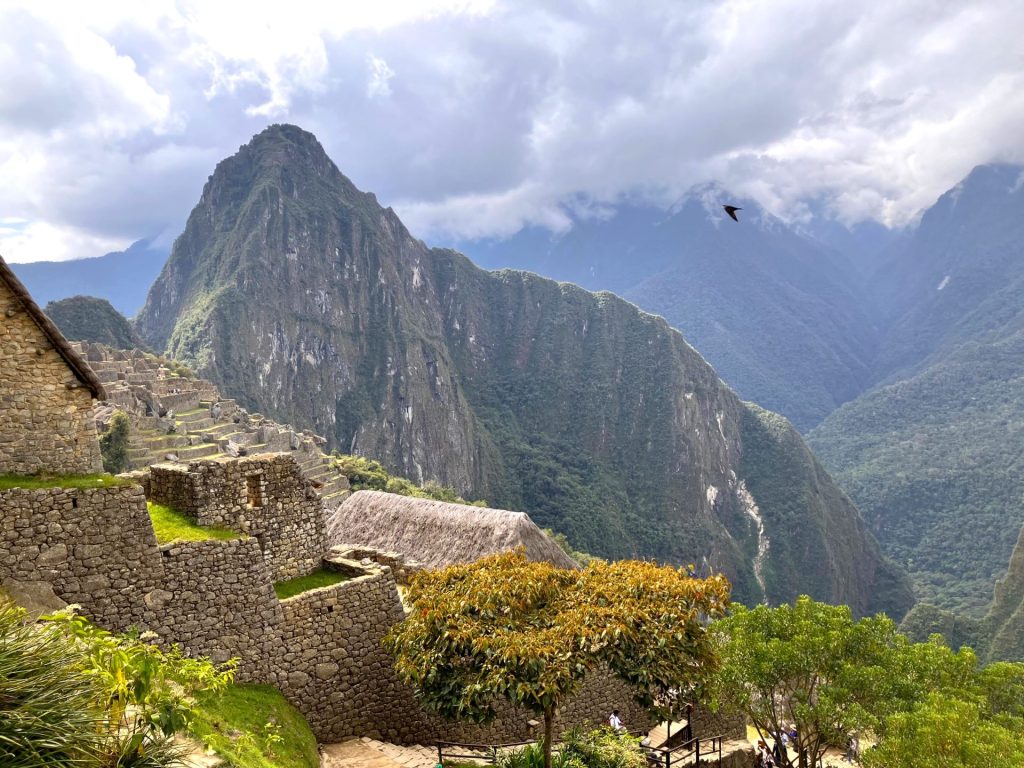
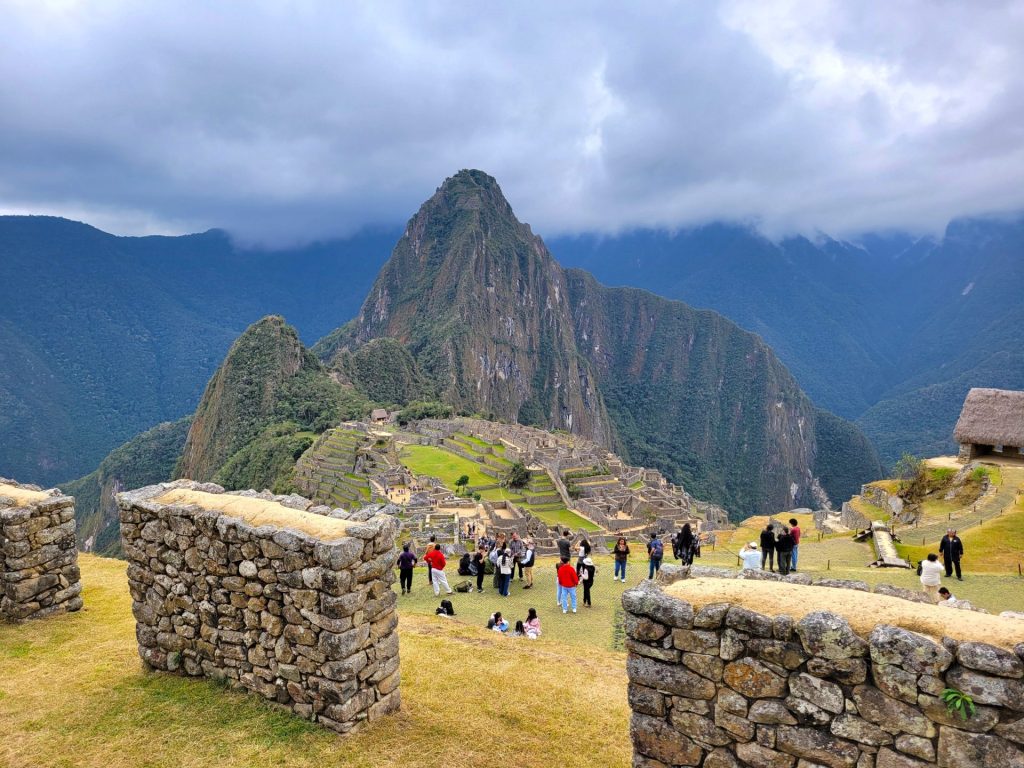
It turns out that everything inside Machu Picchu is very regimented with only one direction of travel allowed along the predetermined path from our ticket. We would have never been able to spend 2.5 hours without some serious dawdling. We even had one of the longer add ons (Circuit 1 plus the Inca Bridge) that’s 3.8 km (2.4 miles) in total. Still, we were able to see everything available to us, take plenty of pictures, and learn a lot about the history in less than 2 hours. Which was good, because we didn’t have much more time than that due to the earlier delays.
Then afterwards, we walked to the end of the lengthy line for the bus while our tour guide decided to check around to see if there were any options to get us back sooner. We only waited a bit before he returned and had us march right back up to the start of the line. Once there, the workers ushered us onto the next bus heading down the mountain. That skipped line saved us an hour of waiting and allowed us to easily catch our return train, which would’ve been very close otherwise. We then boarded our return train for another slow, jostling 3.5 hour ride. Fatigue from the early departure and navigating the massive crowds was beginning to set in, so the return seemed way longer than the arrival trip.
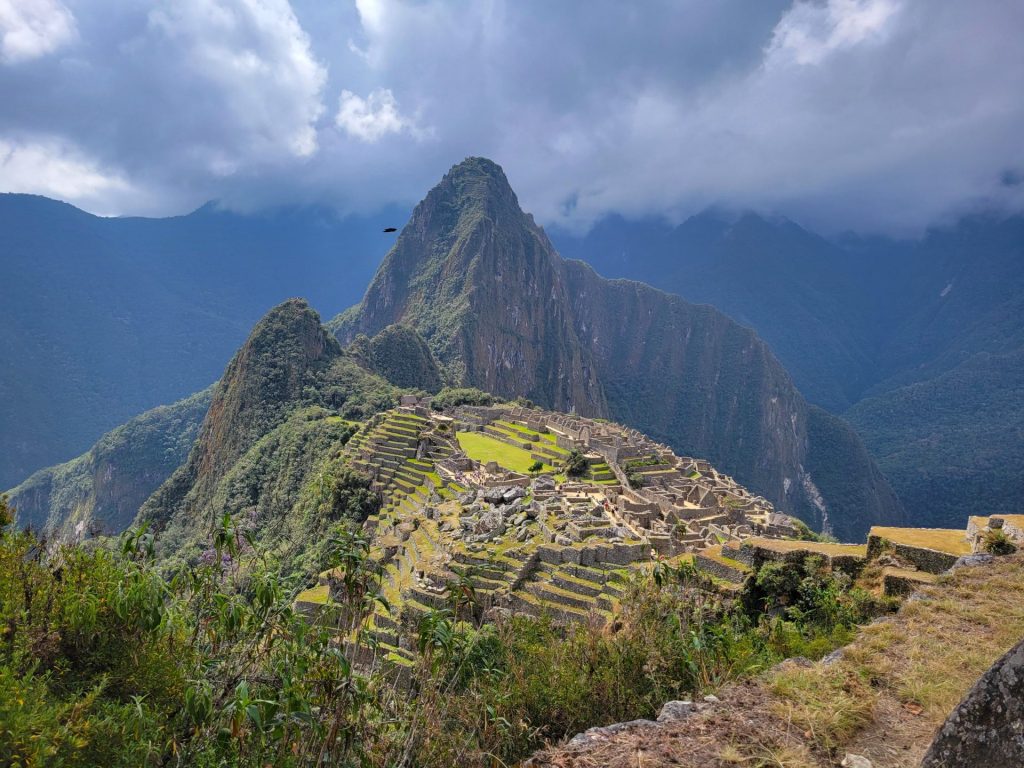
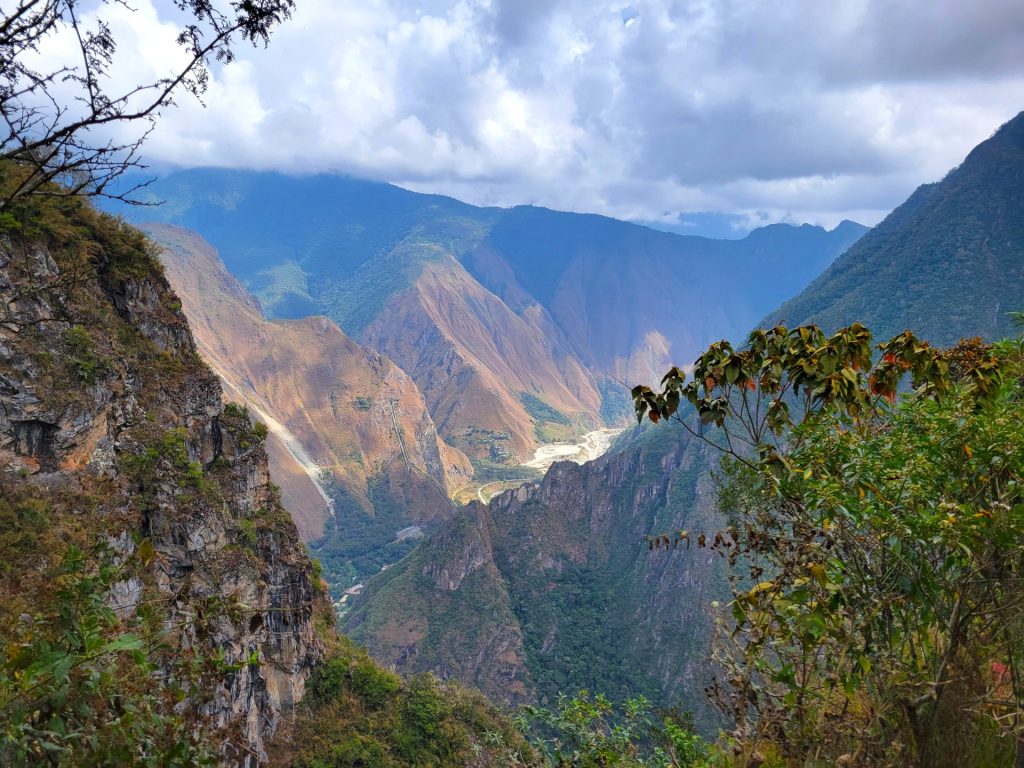
I’m honestly not sure if it was all worth it. The ~100 minutes that we spent inside the site was pretty great. The sacred mountain views and deep valleys definitely felt special. But the whole process of getting there and back, standing in multiple long lines, dealing with the required guide, and getting herded through the site was such a hassle. It definitely sucked a lot of the fun out of the day.
We could’ve opted to stay a night in Aguas Calientes to at least split up some of the travel, but that town is such a tourist trap that I’m not sure it would’ve improved the experience. And maybe we could’ve picked a better tour company, although I was very satisfied with the communication and service we received right up until we arrived at the top of the mountain. I guess I can say that I’m happy to have seen it, but it’s not something I’d ever want to repeat.
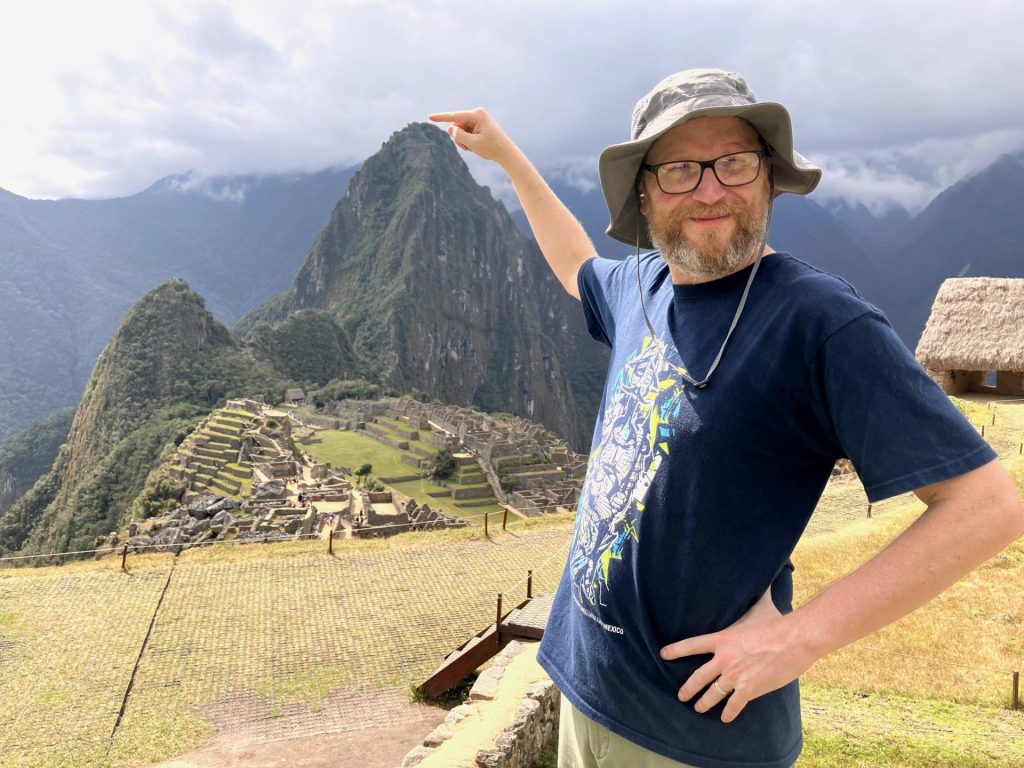
Where We Stayed
We rented a cramped 2 bedroom apartment with panoramic views of the city. That view meant getting home from downtown took a long climb necessitating multiple oxygen breaks. However the scenery was worth the effort. We mostly liked the rental, although we had one major issue. Despite the listing saying that there was heat, there wasn’t. For about a week of our stay, the temperatures dropped below freezing overnight. But the apartment was built with the same type of windows that we experienced in Lima, which are just panes of glass that slide past each other. So they wouldn’t have done much to maintain indoor temperature even if the listing had been accurate.
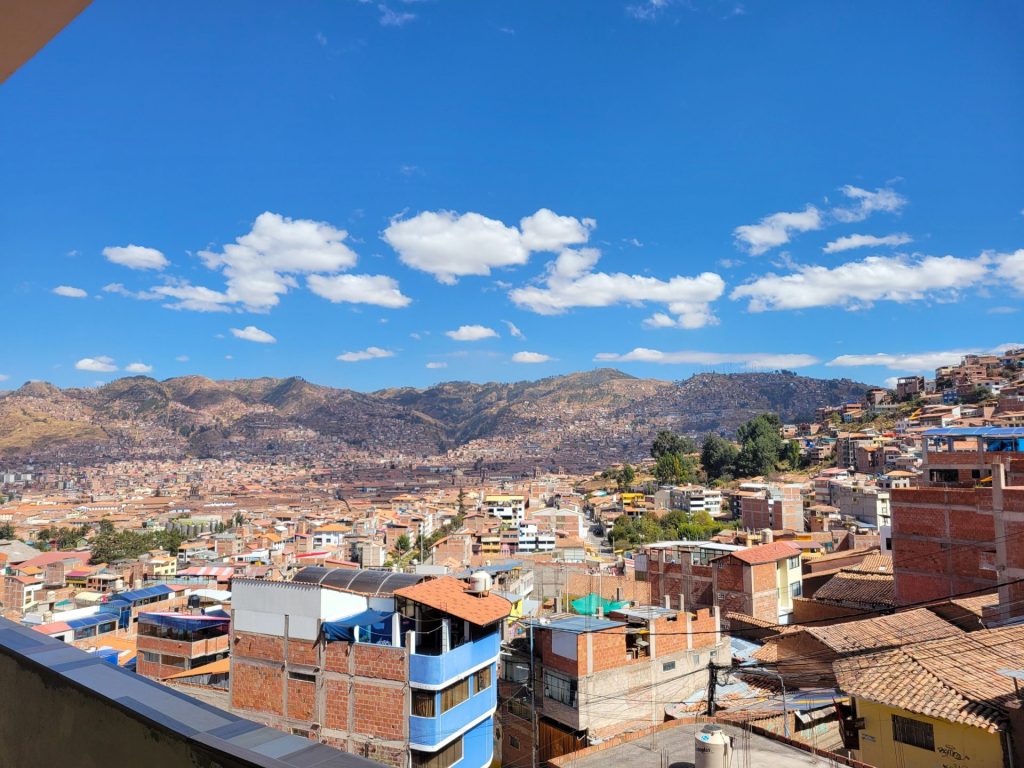
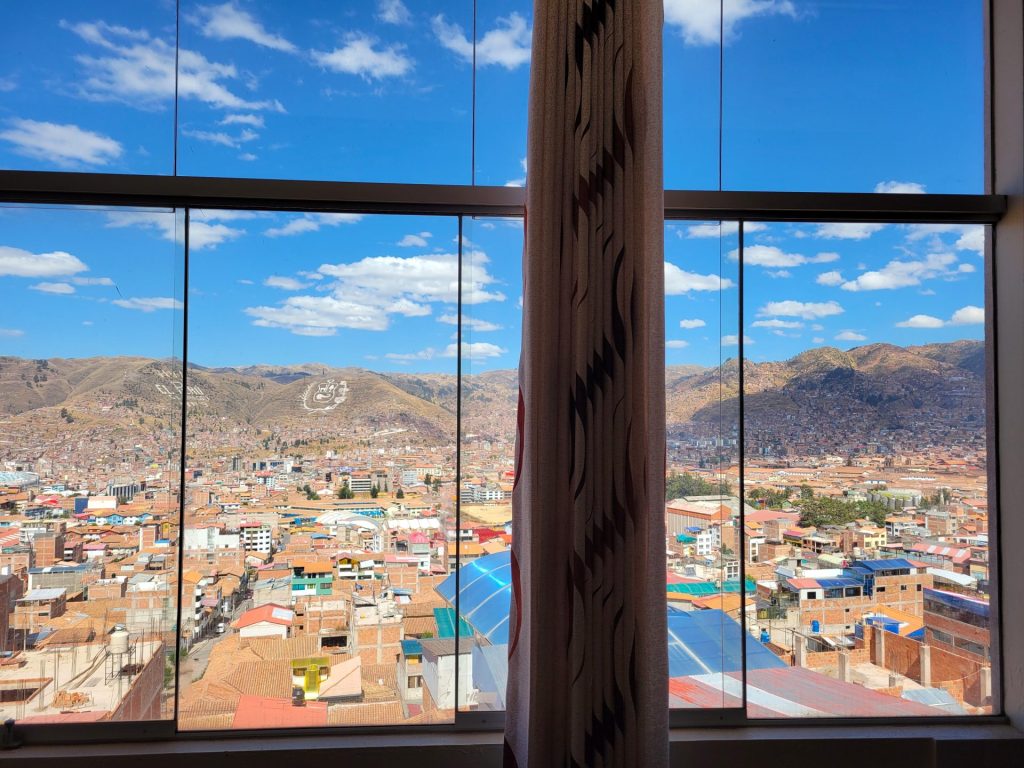
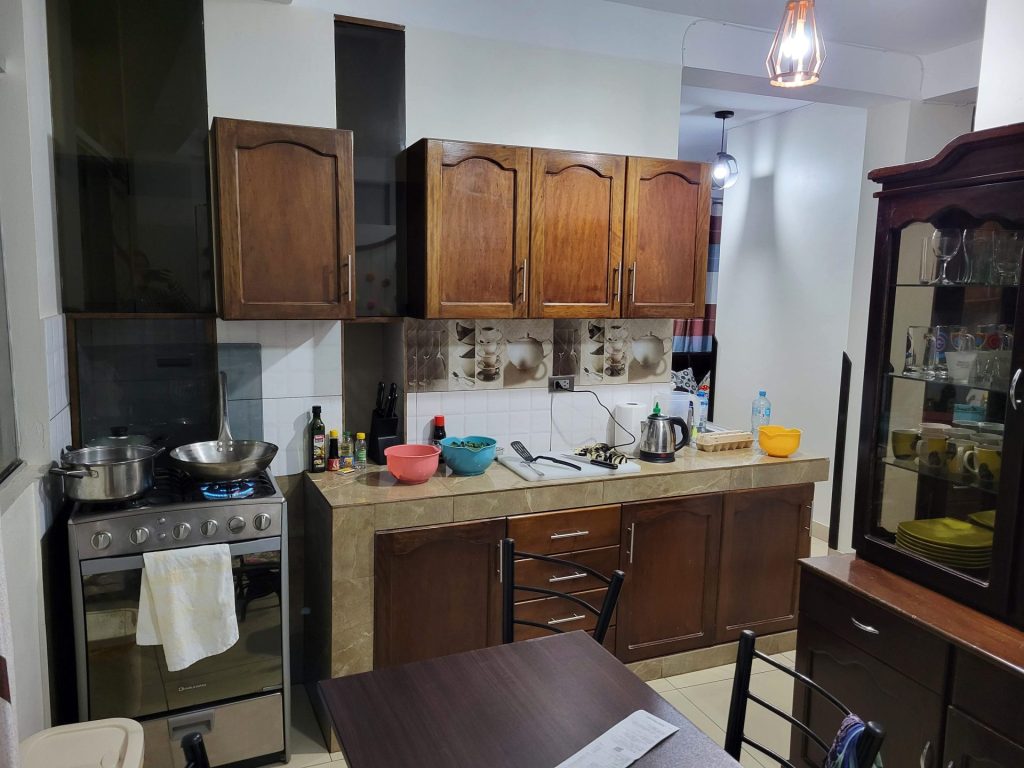
We had enough blankets so that the nights weren’t too bad, but the mornings were pretty bone chilling. I took to waking up everyday and putting on my stocking cap, two sweaters, and winter coat. Then I wrapped my legs in a blanket. These layers were barely even needed outdoors, as by the time we were ready to leave the house around noon, it was warm enough to go without. In fact, the only time I wore my warm coat was inside. That seems to be the Cusco experience though. I don’t think indoor heating really exists there, since it only takes a short climb up any of the hills to shake off the chill.
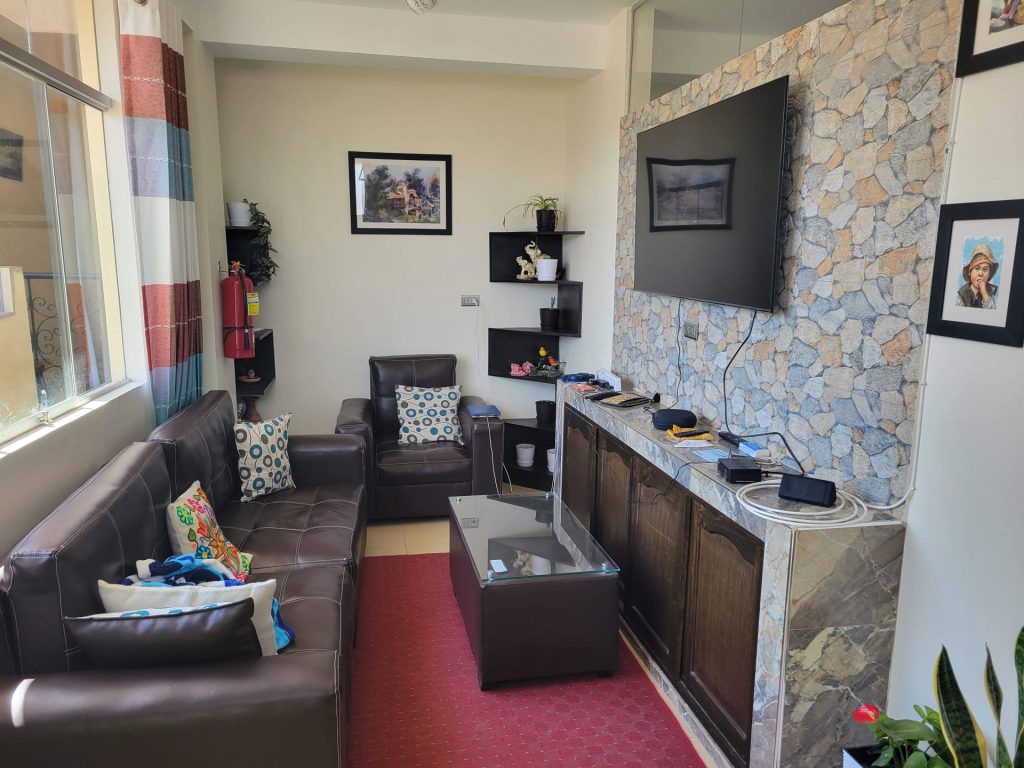
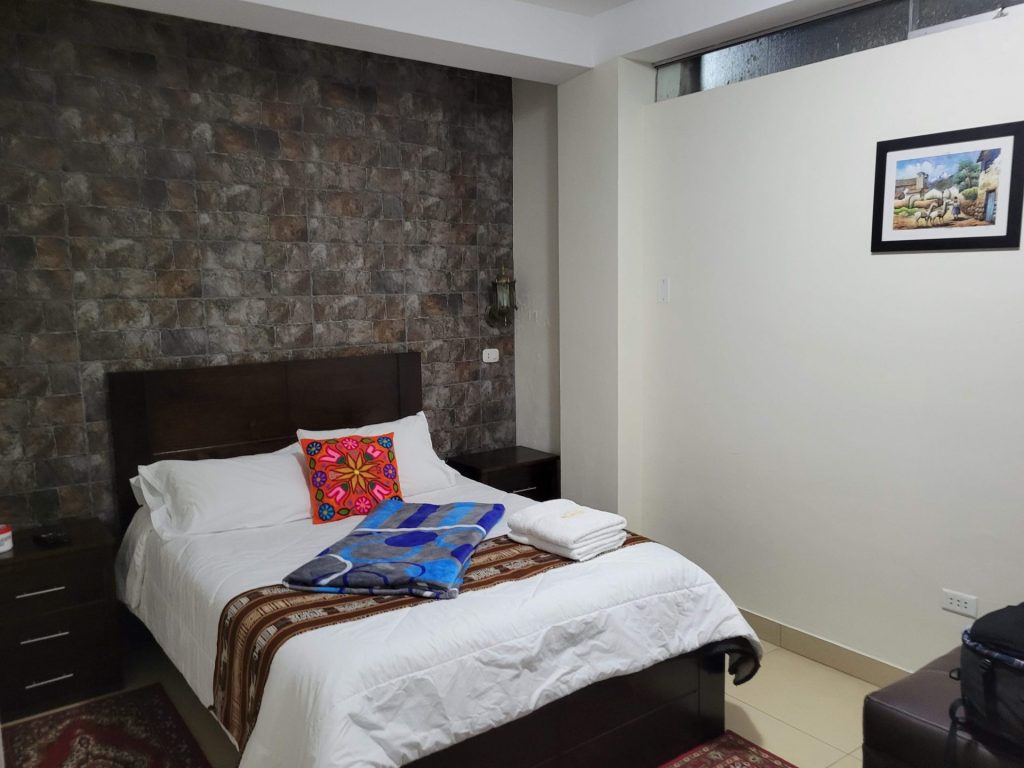
What We Spent
We had an inexpensive apartment, but our overall spending in Cusco was at our highest rate ever. The trip to Machu Picchu was certainly a splurge and we couldn’t resist picking up some alpaca wool clothing. And due to the mountainous landscape, it’s nearly impossible to travel around Peru without getting on a plane. Added together, the flights, Machu Picchu excursion, and extra shopping made Cusco our most expensive stop yet. In total we spent $2833 during our 24 days in Cusco. Including our regular bills for insurance and mail service, the total outlay comes to $3042, or just under $127/day.
Overall we really enjoyed our time in Cusco. The weather was basically the exact opposite of Lima, with abundant sun every single day to help facilitate the ample outdoor activity. We thoroughly enjoyed all of the archeological parks that we visited, with each one having a different feel and a number of excellent hiking trails. While I wish our Machu Picchu experience could’ve been better, there’s no denying the natural beauty. We also visited multiple museums, including the Maximo Laura Museum, which was such a treasure. With all of the fun things to do, numerous mountain views, and a plethora of excellent hiking, the altitude wasn’t the only thing about Cusco that took our breath away.
Unbelievable pictures!
Thanks Sue!
Thank you for such amazing pictures and detailed reviews – I added quite a few new places to my Google Maps aggregated ideas…!!
Re you rapartment – was that an AirBnb..? No heat sounds.. yeeeeaaahhh..!
It makes it better that everyone else is freezing too, right? haha
I can’t imagine how beautiful those tapestries are in person. The photos were amazing!
Thank you so much for sharing all your photos and commentary. You really do a great job.
Thanks Lora. We were both so enraptured by those Laura tapestries. I’m glad I can pass along at least a portion of the beauty.
That will be an adventure you will never forget. Lots of twists and turns along the way but special memories to last a lifetime and look back and reminisce. The tapestries were amazing art. Thanks for sharing.
Hi Glenda,
We’ll certainly look back fondly on our time in and around Cusco. Glad you enjoyed the post.